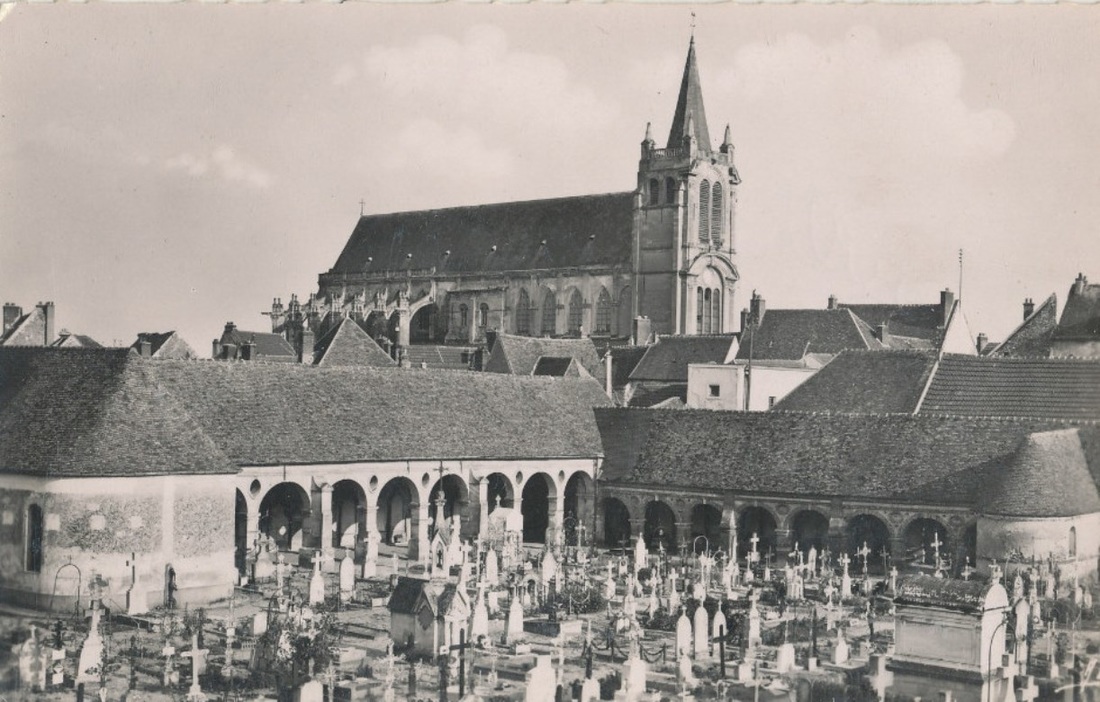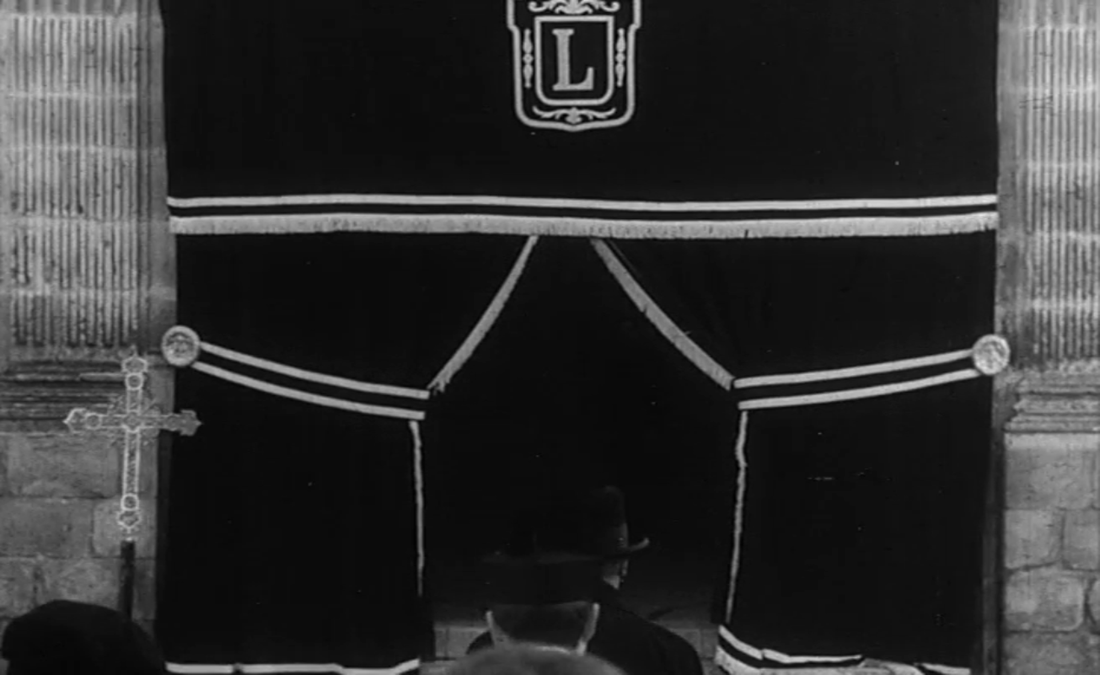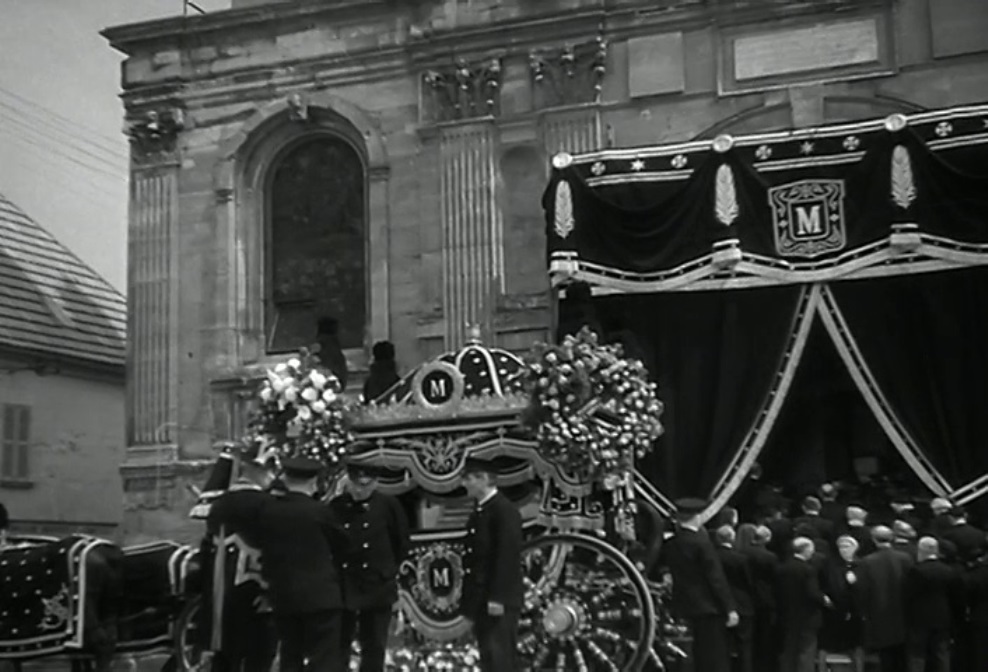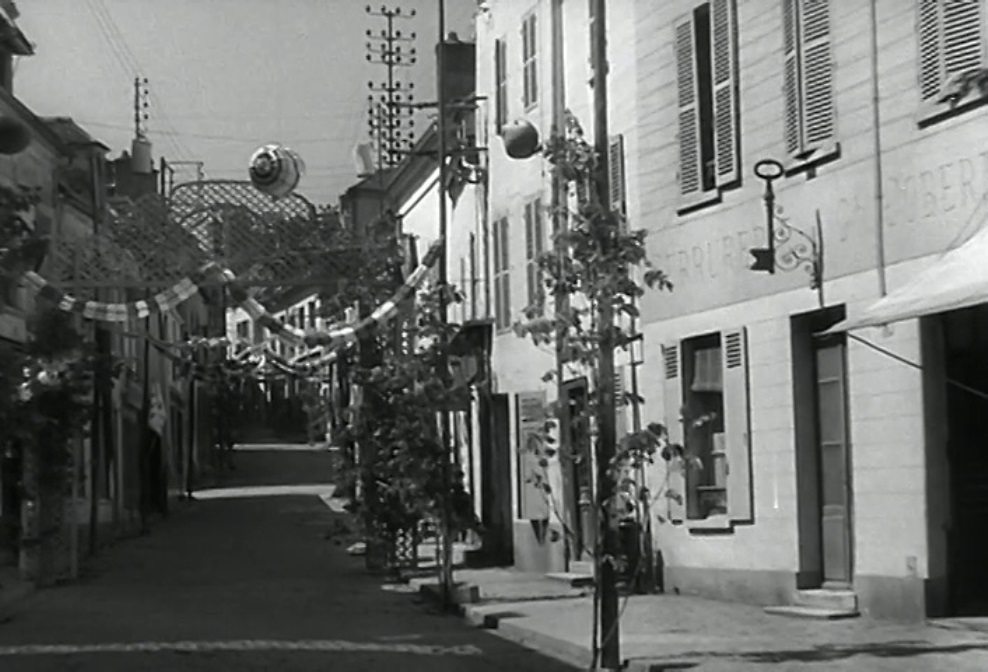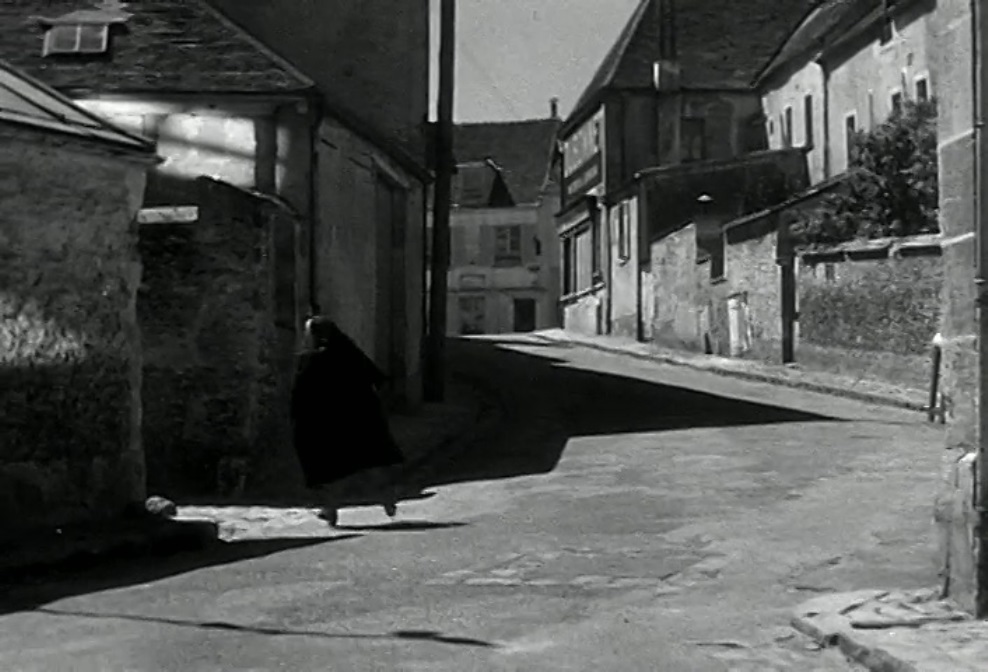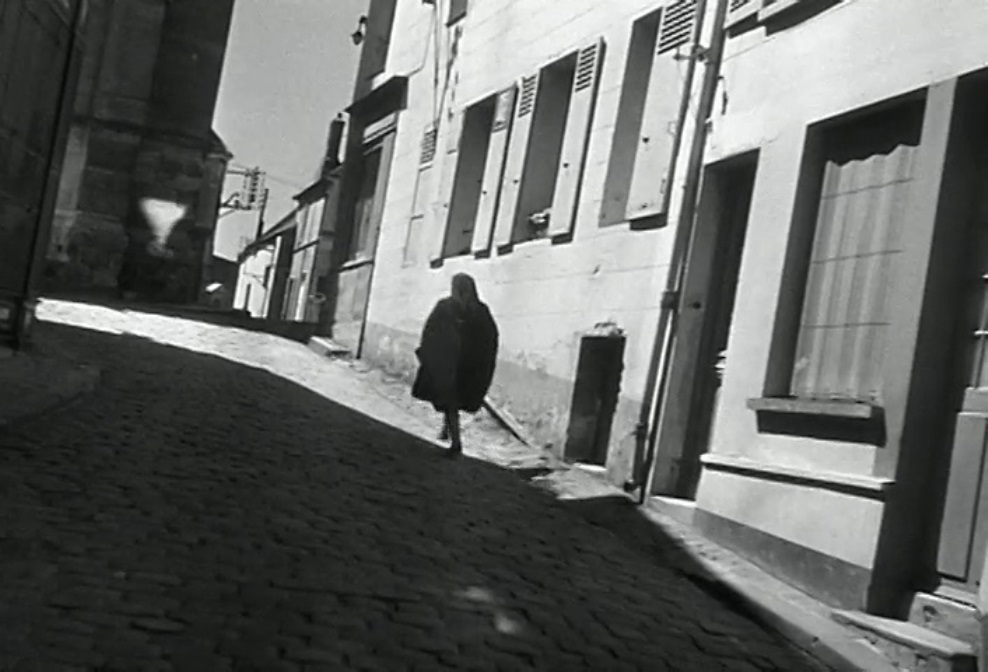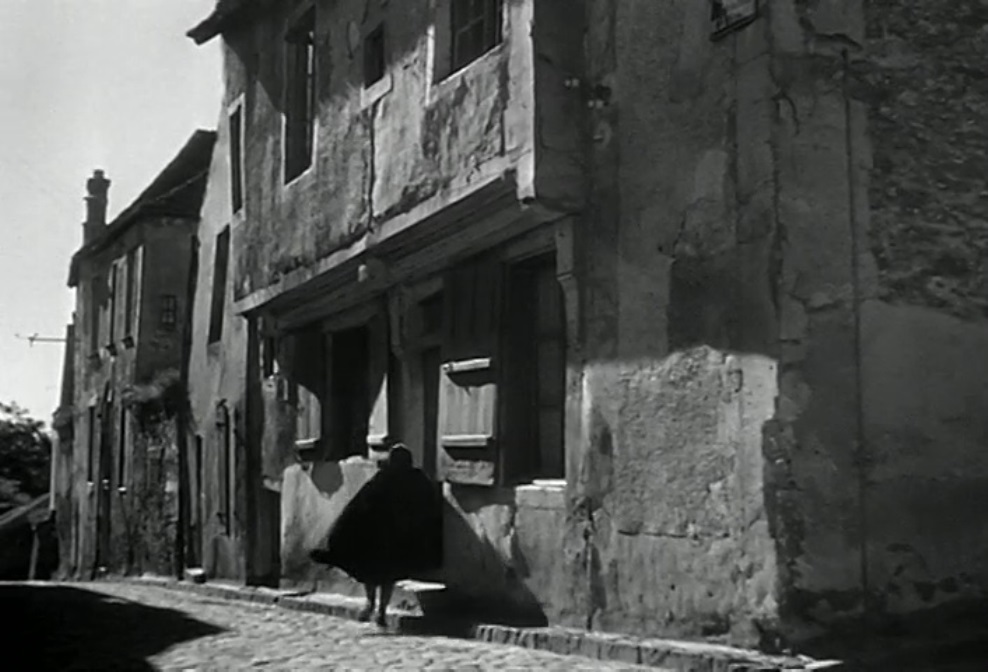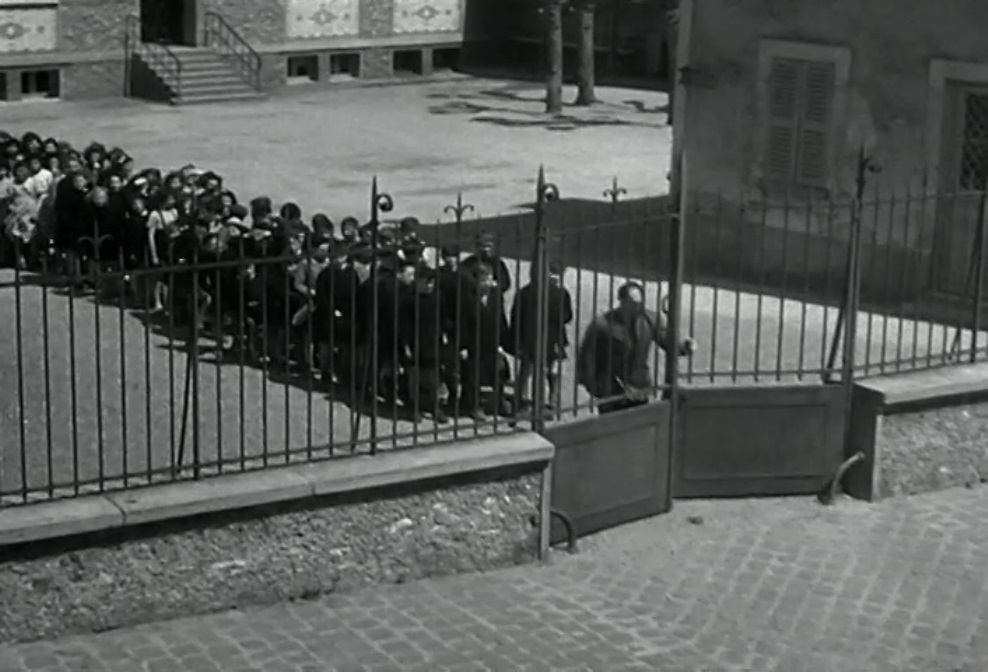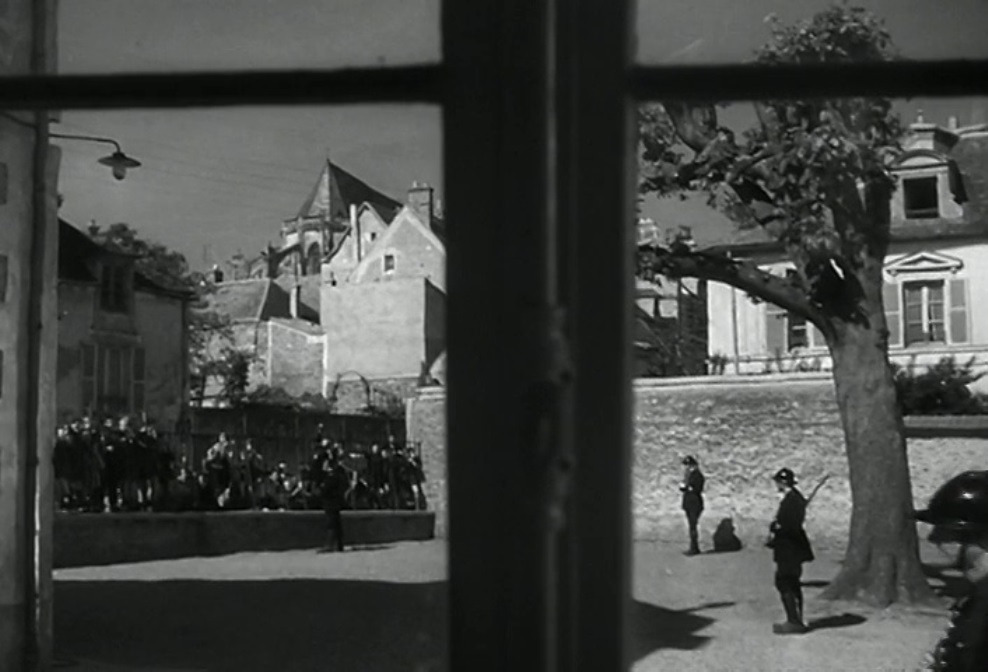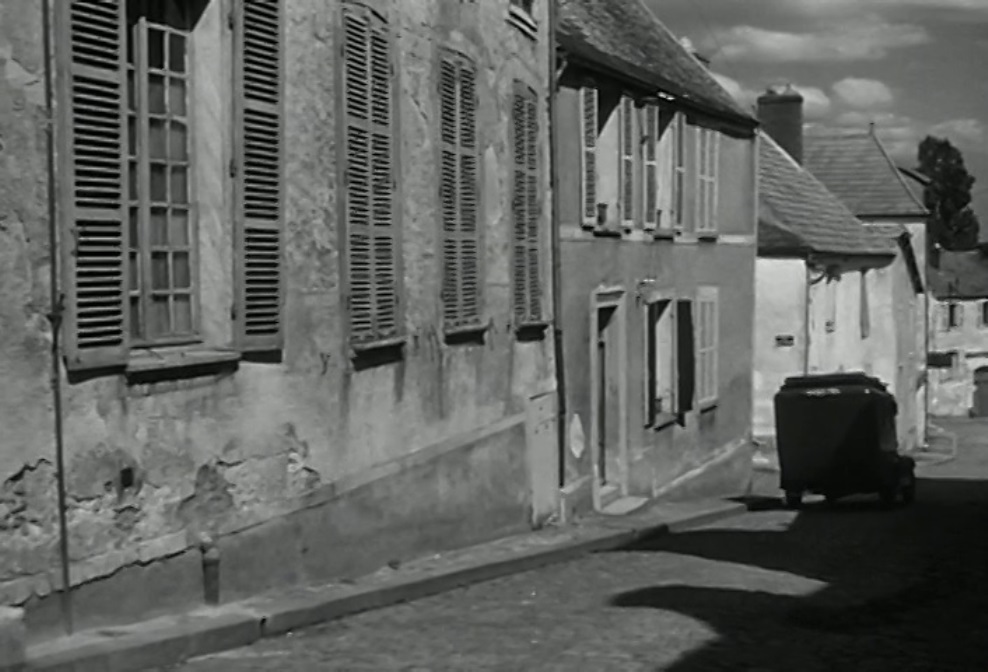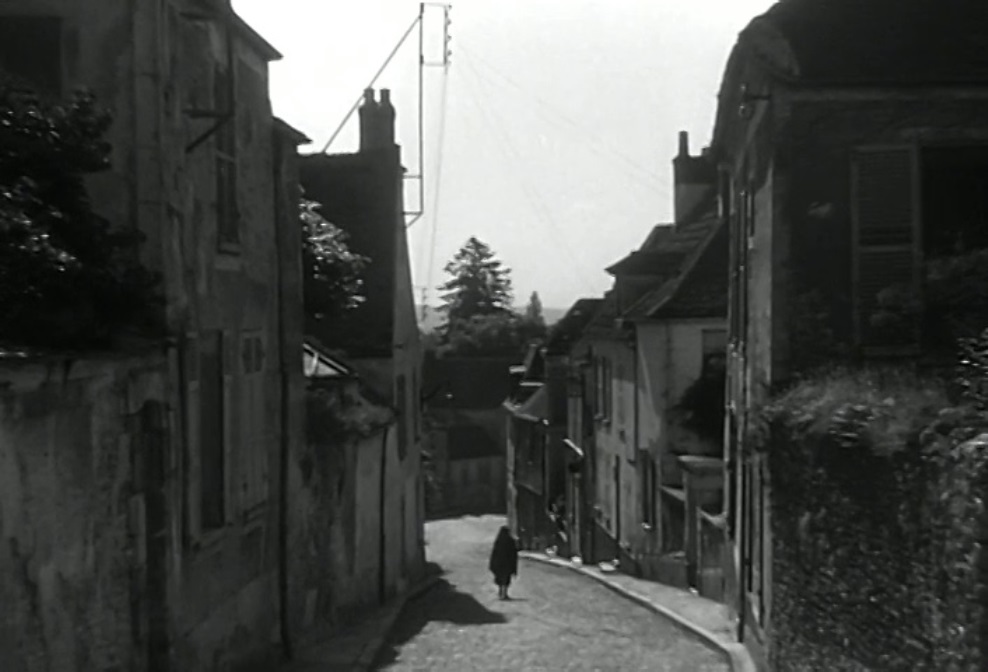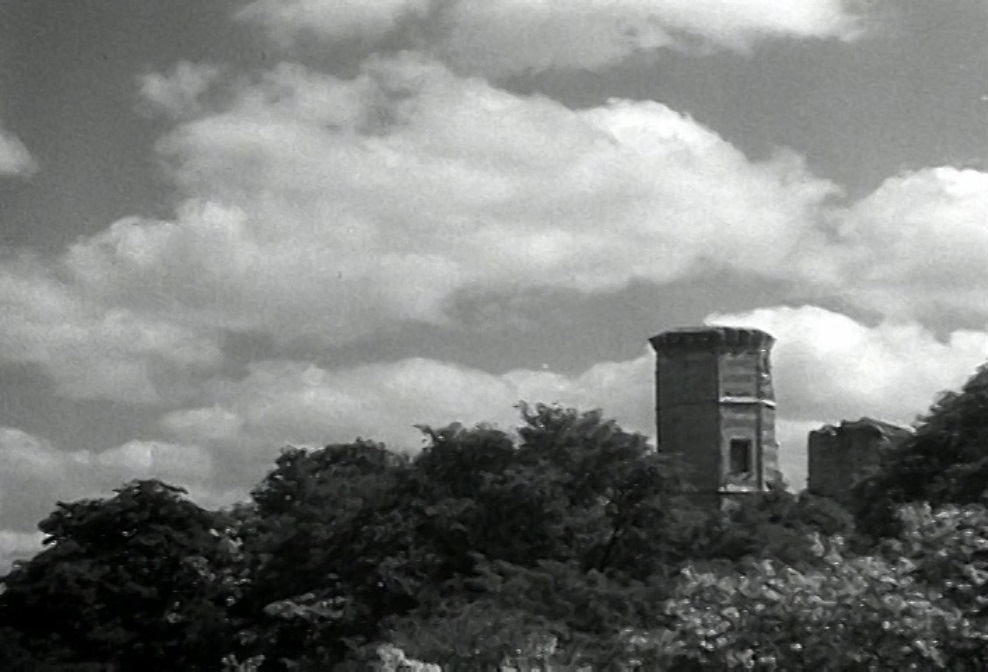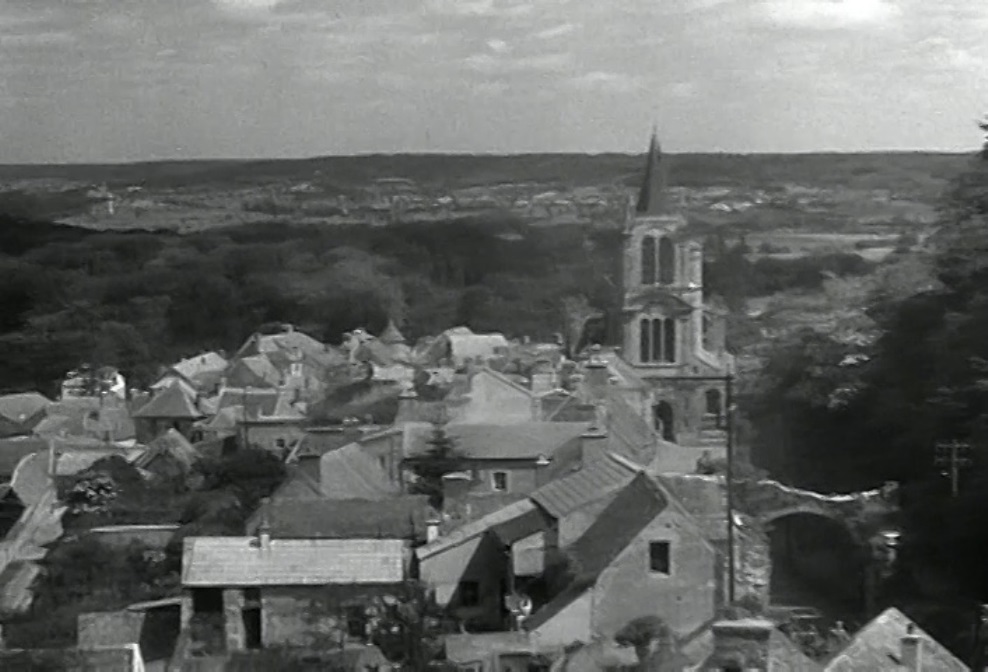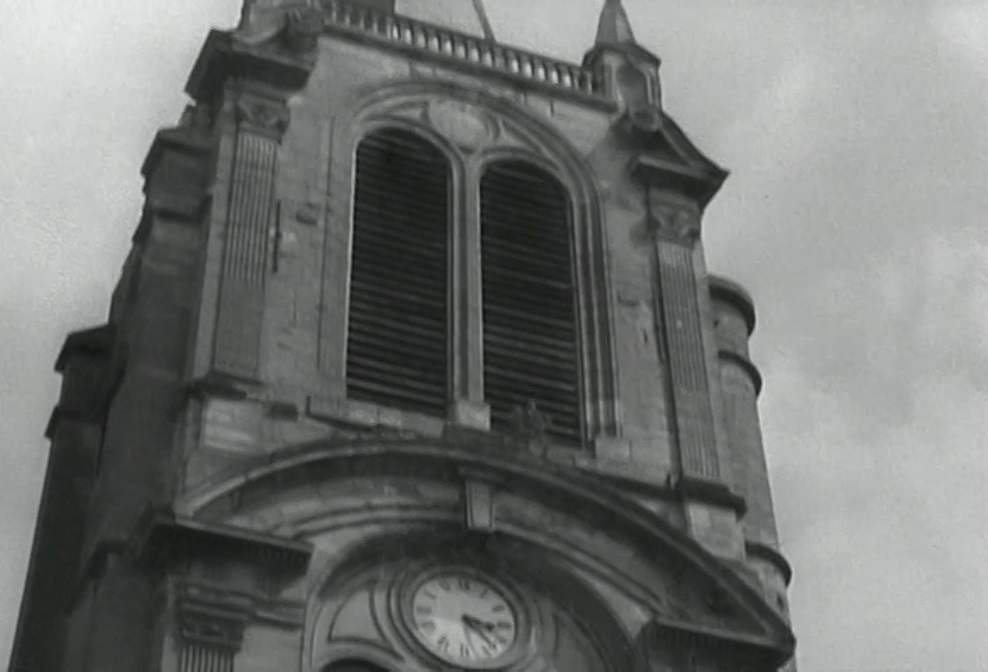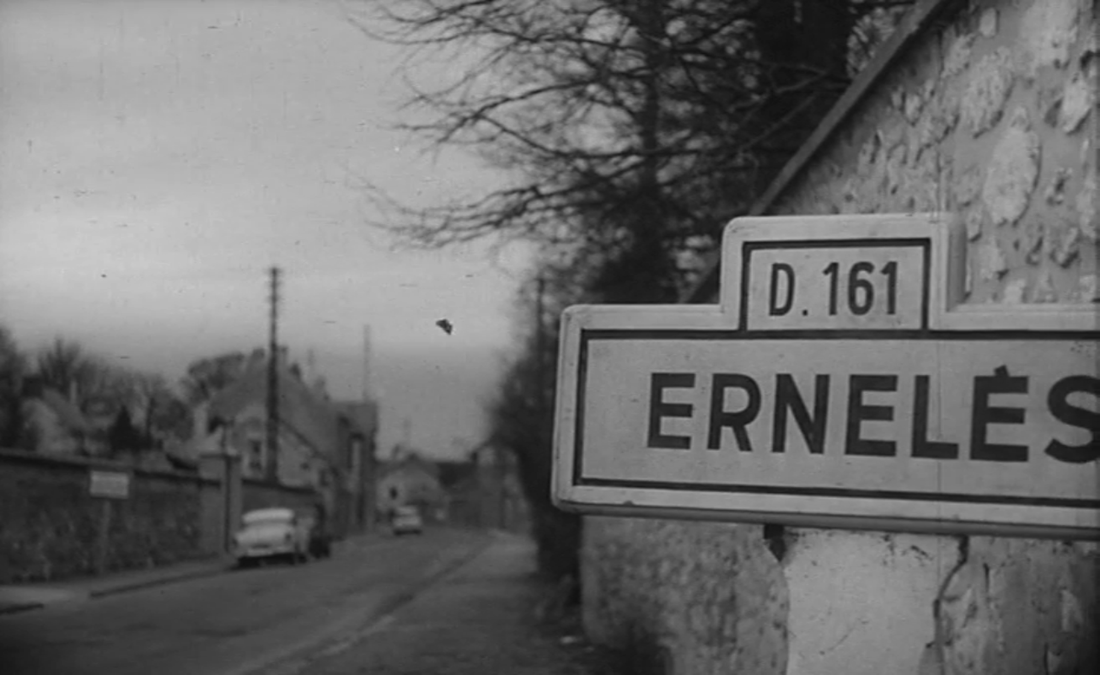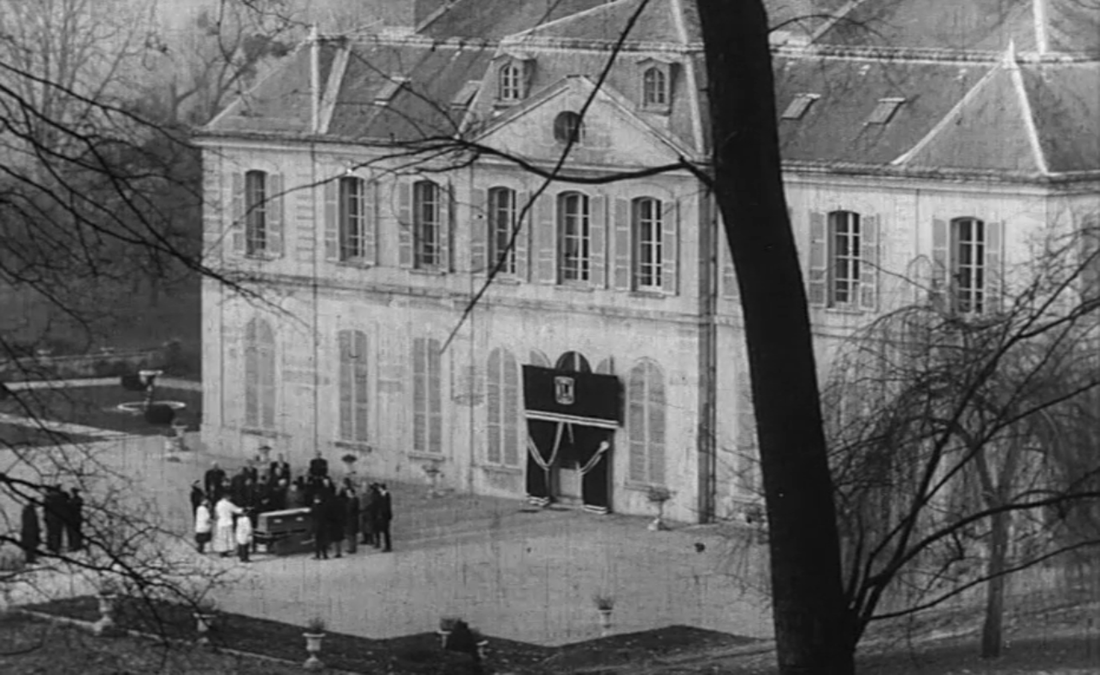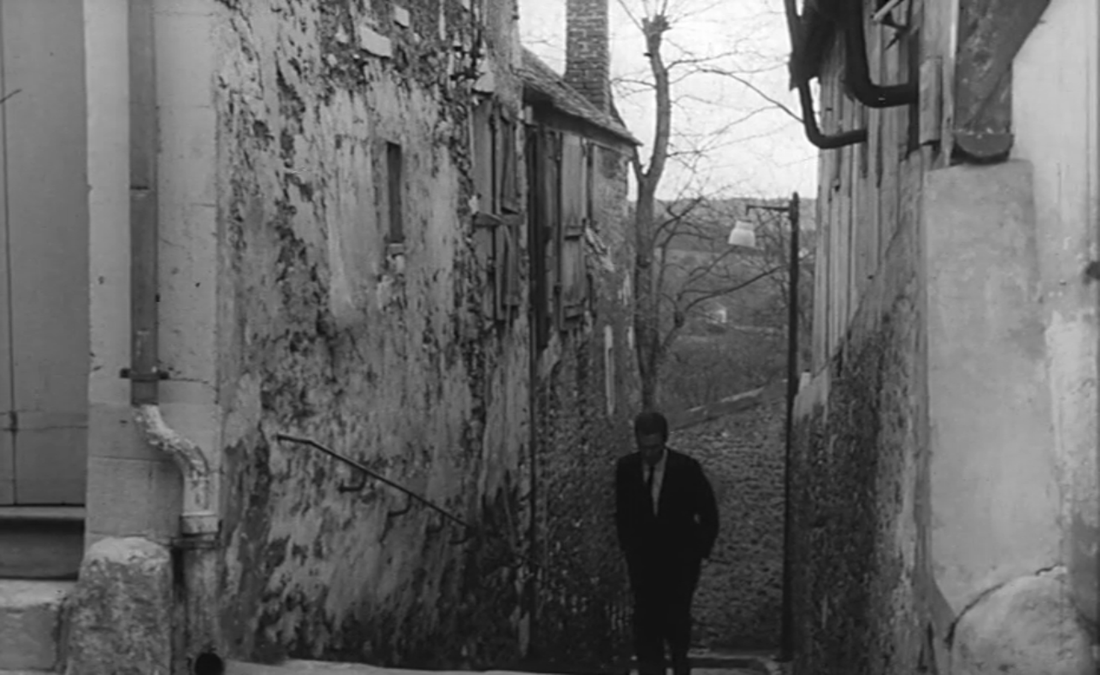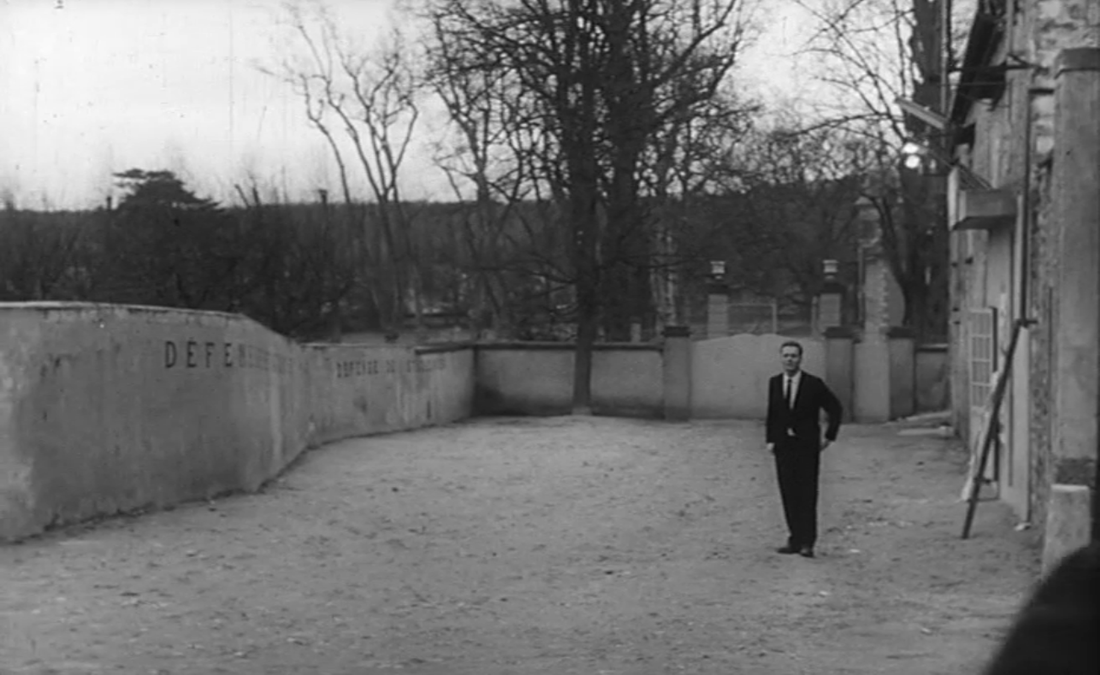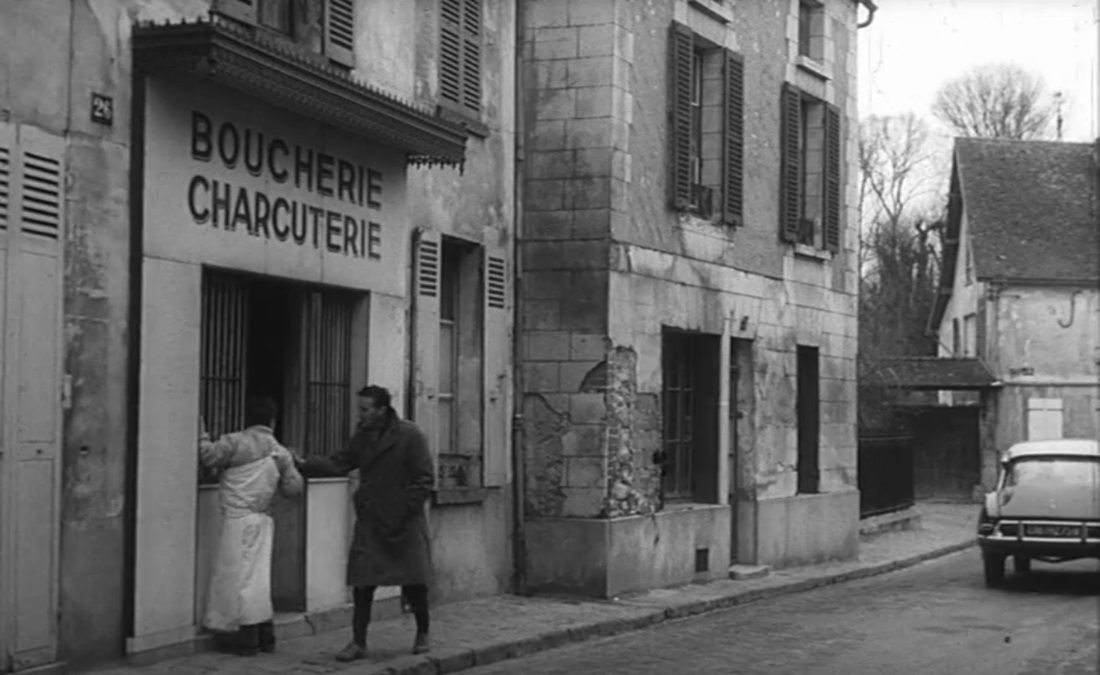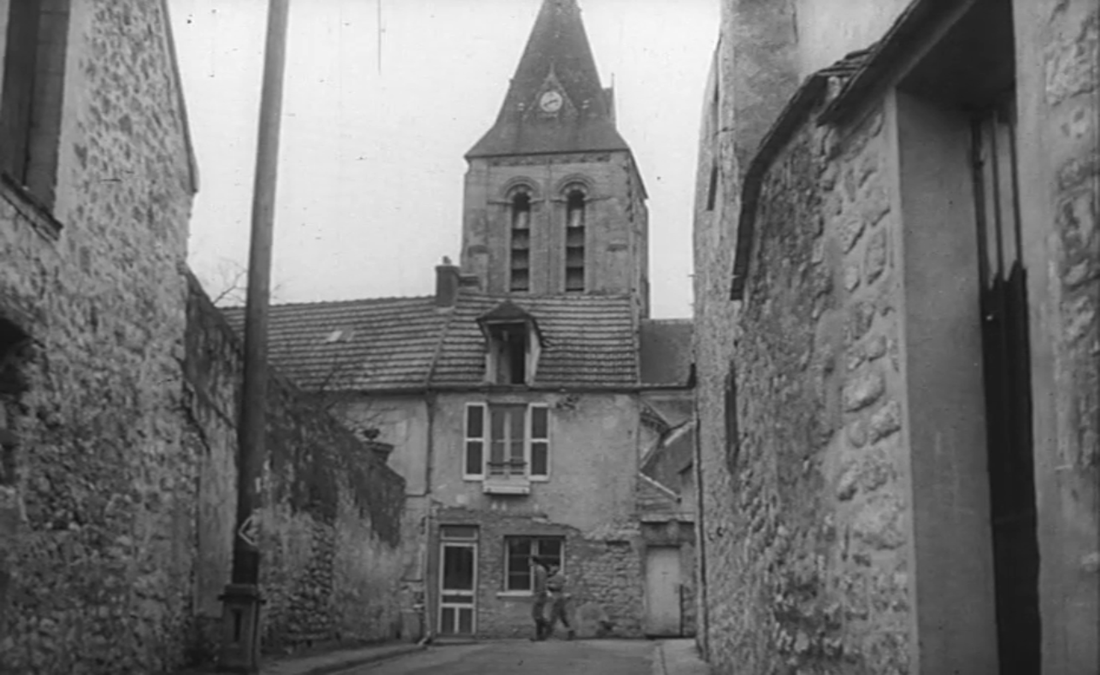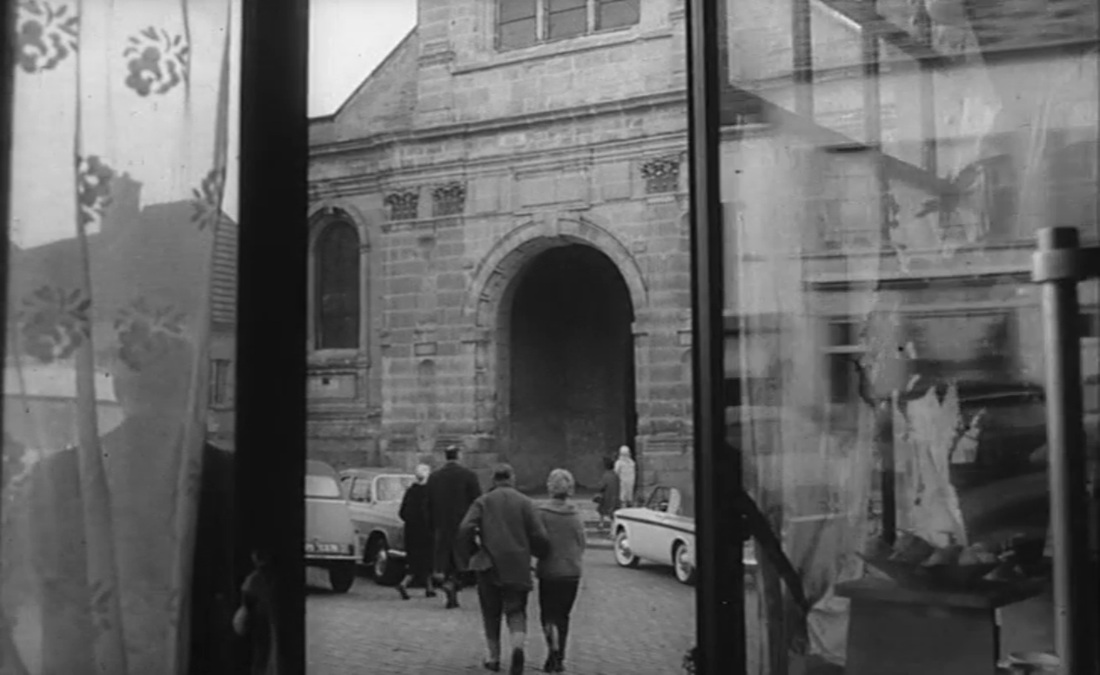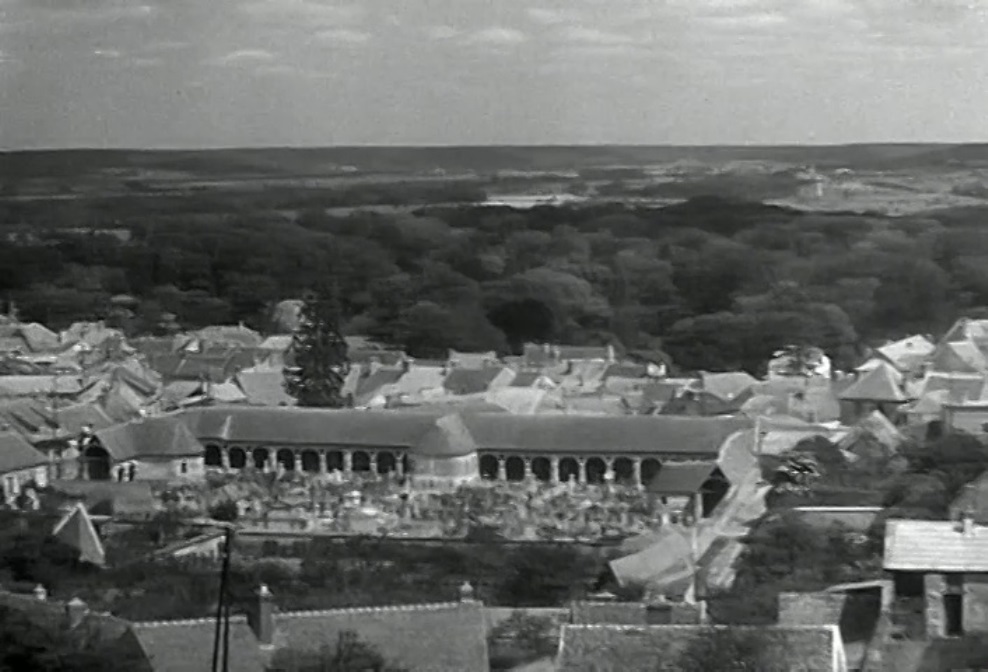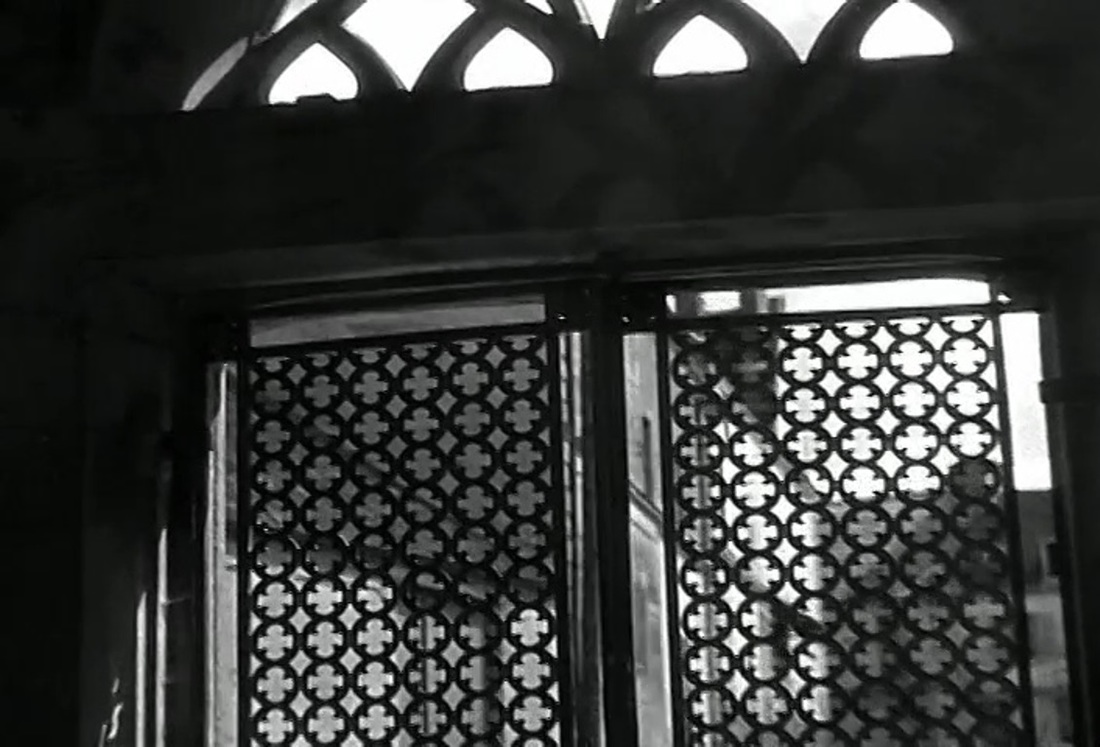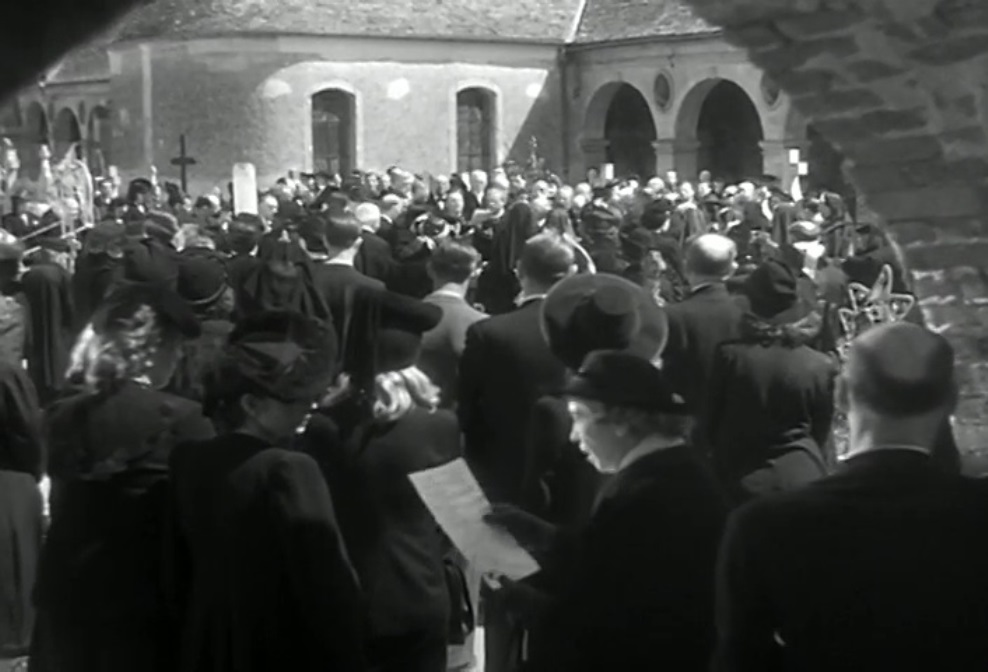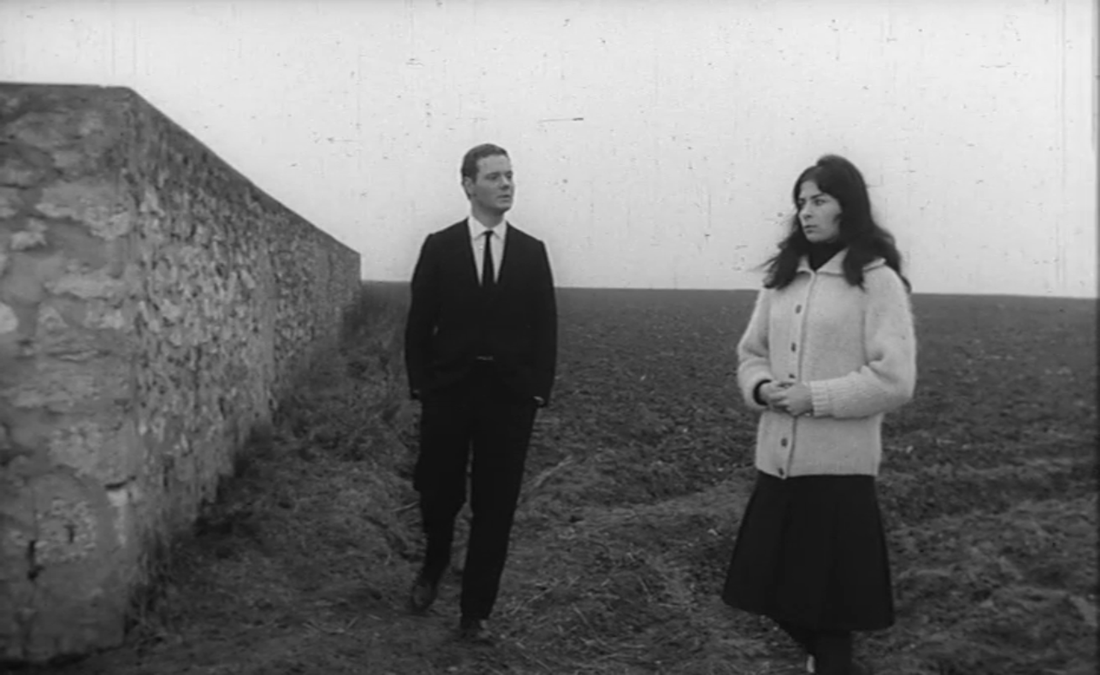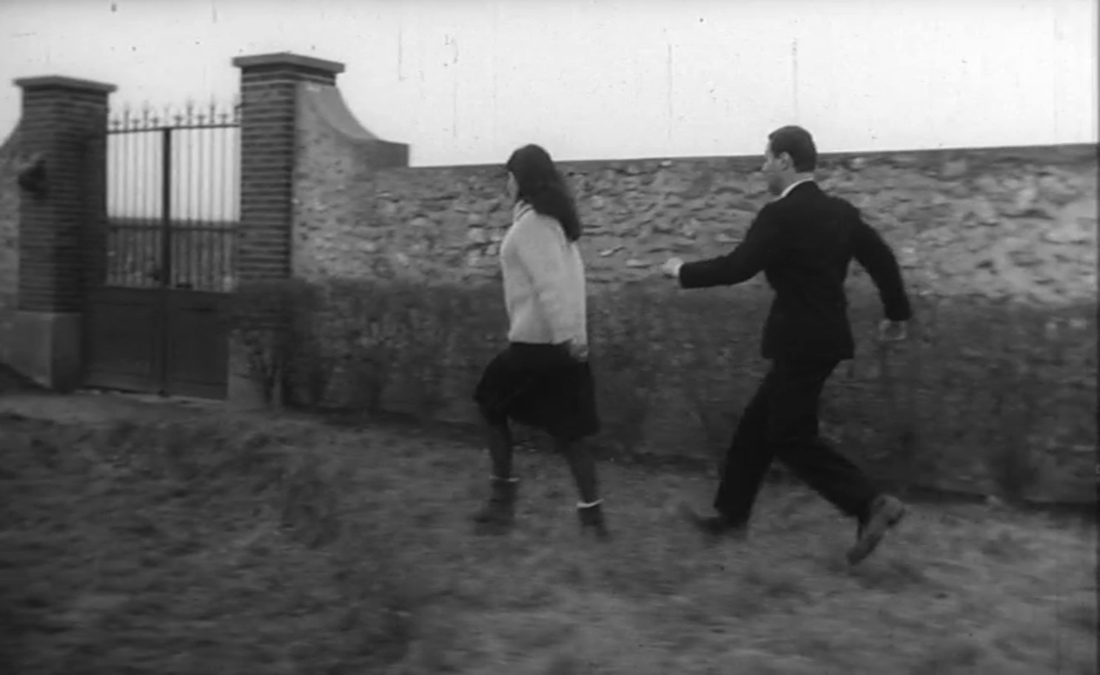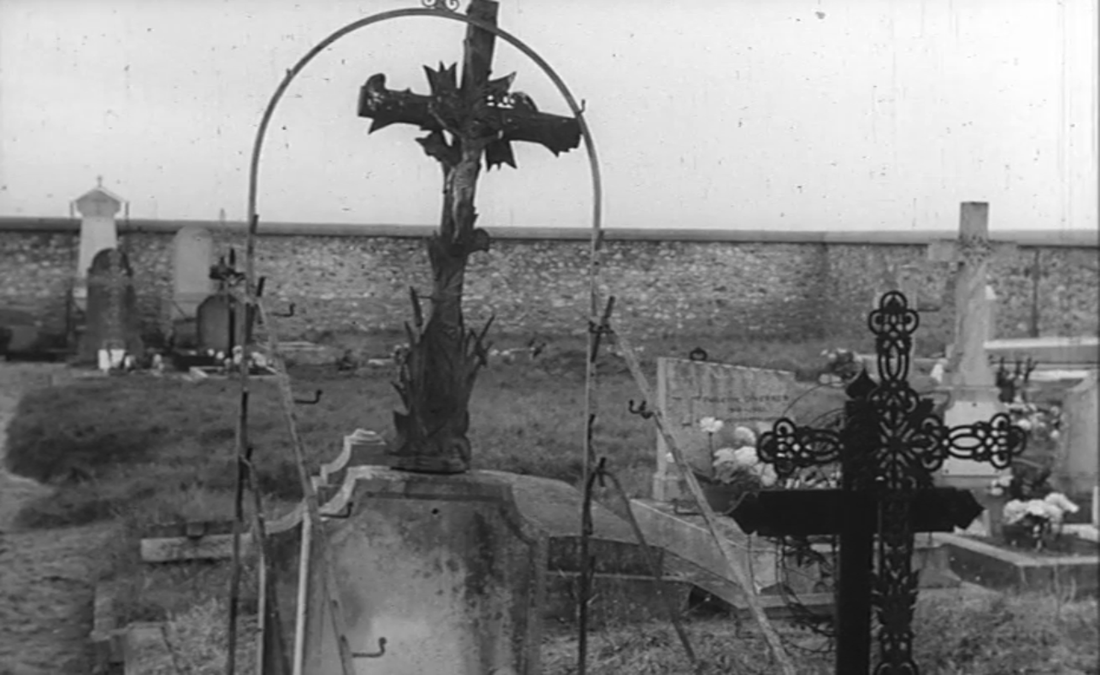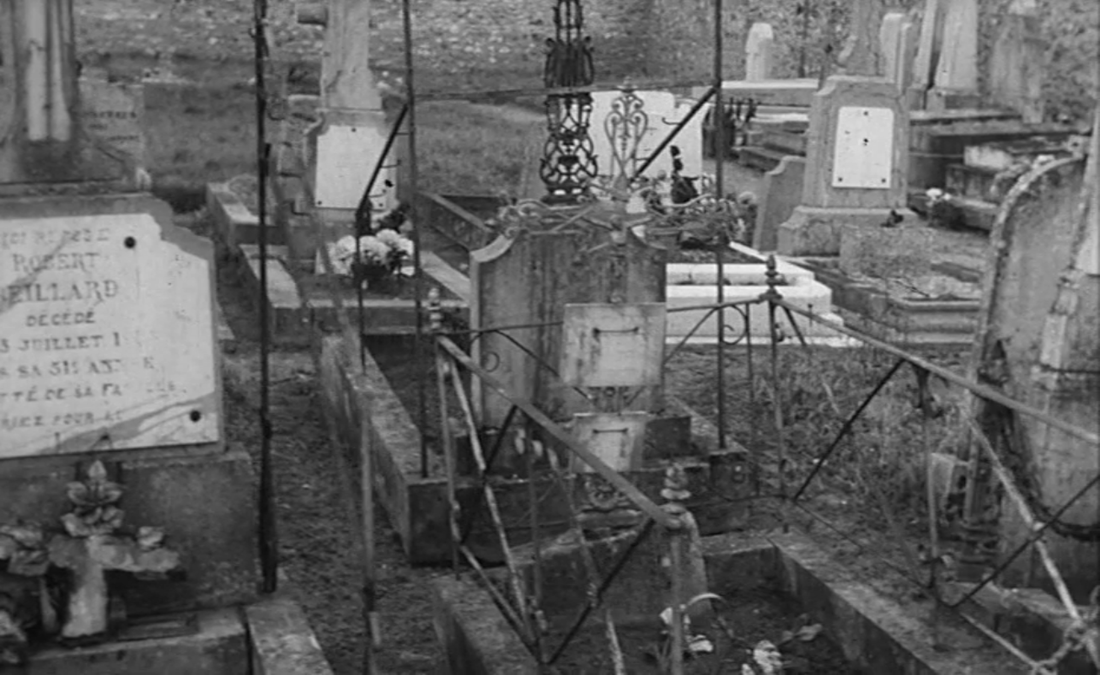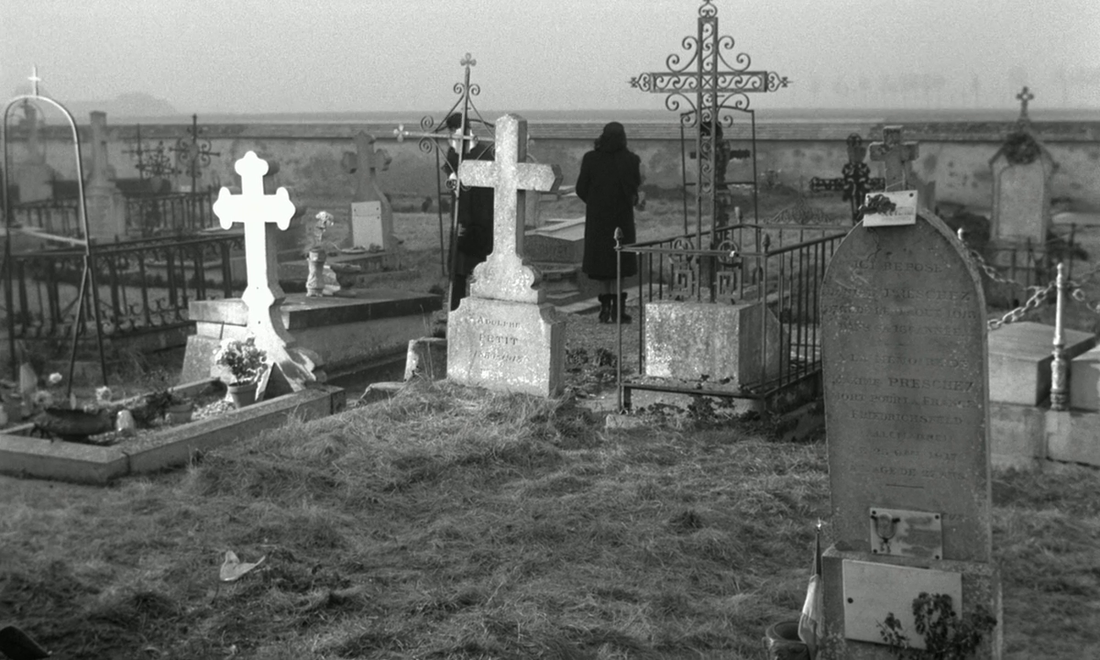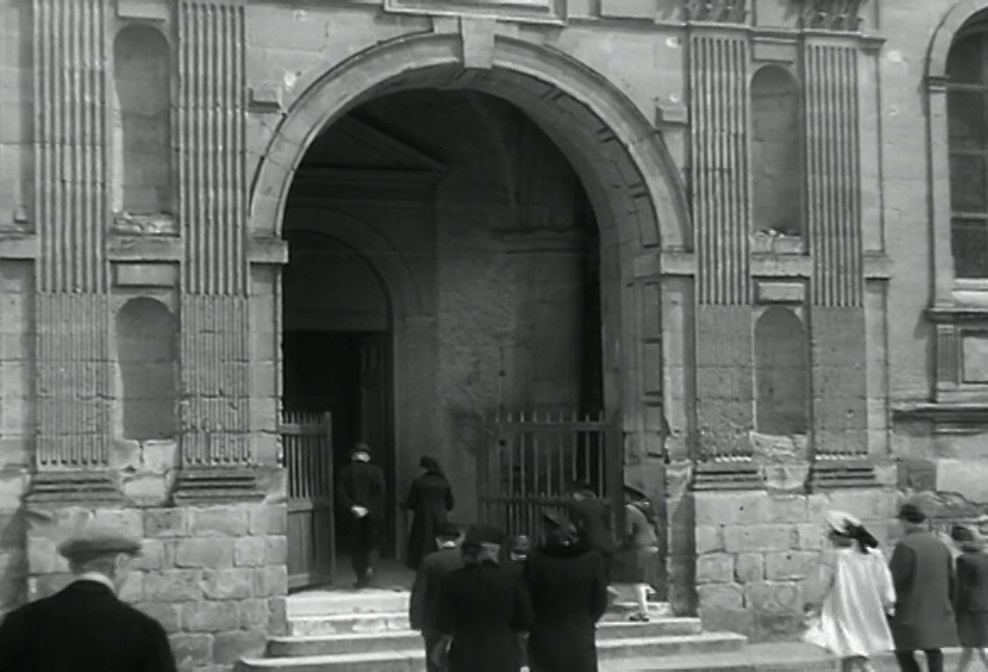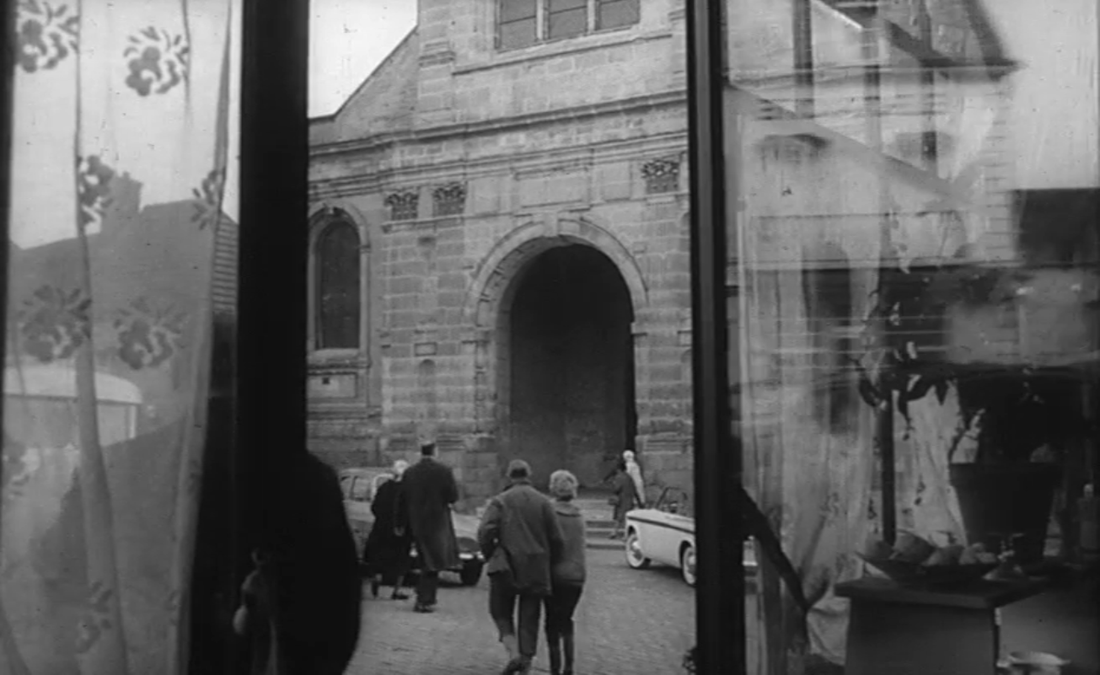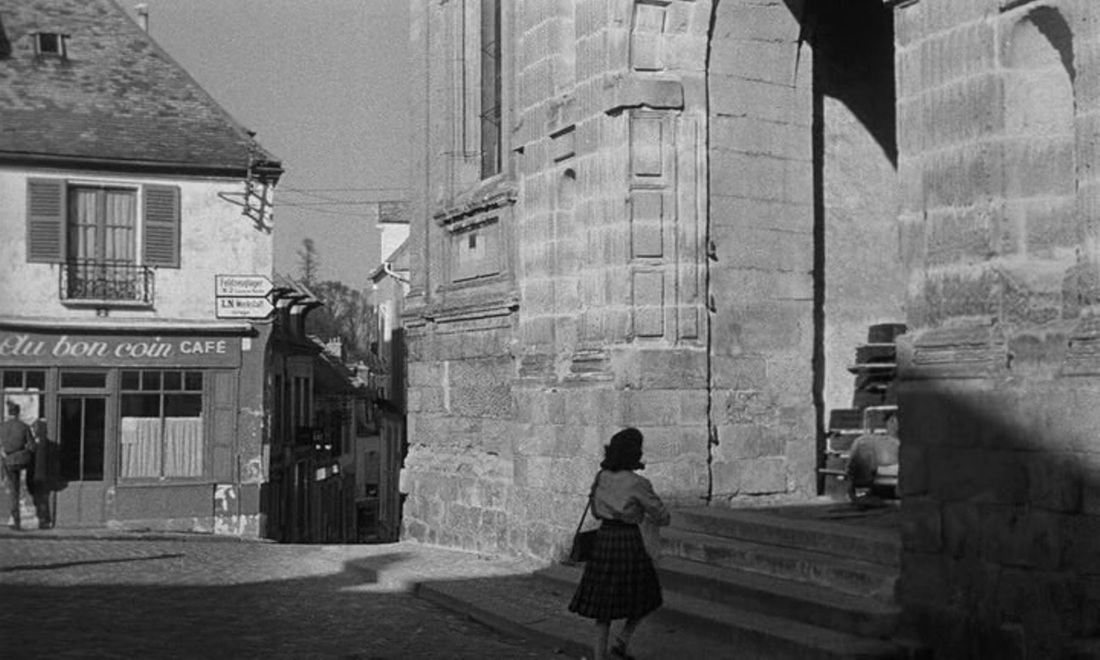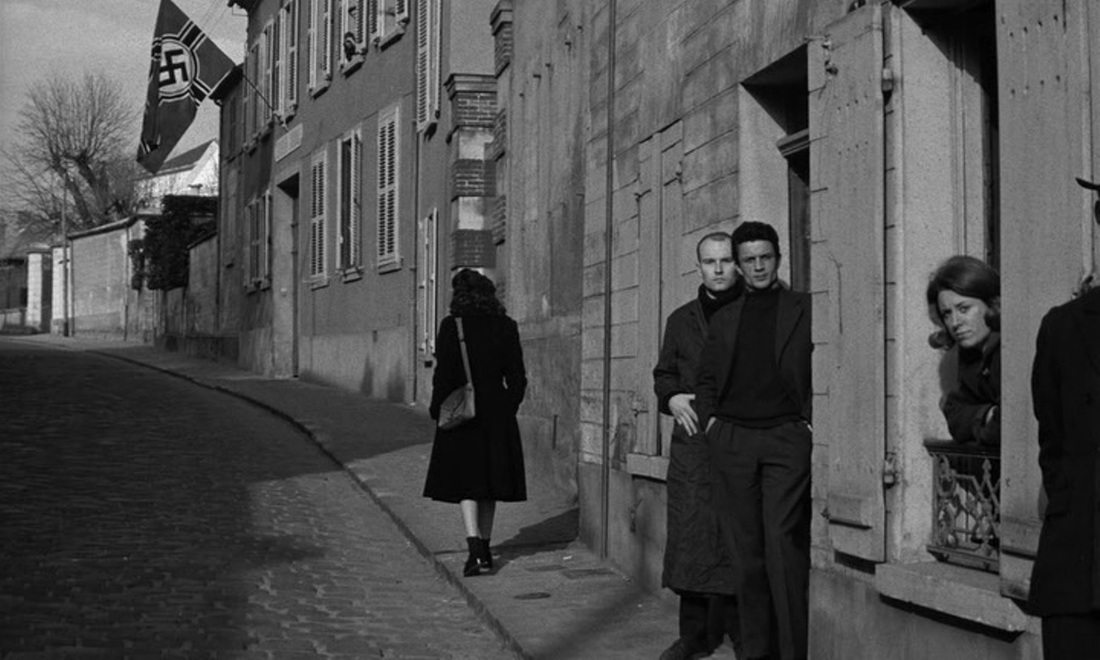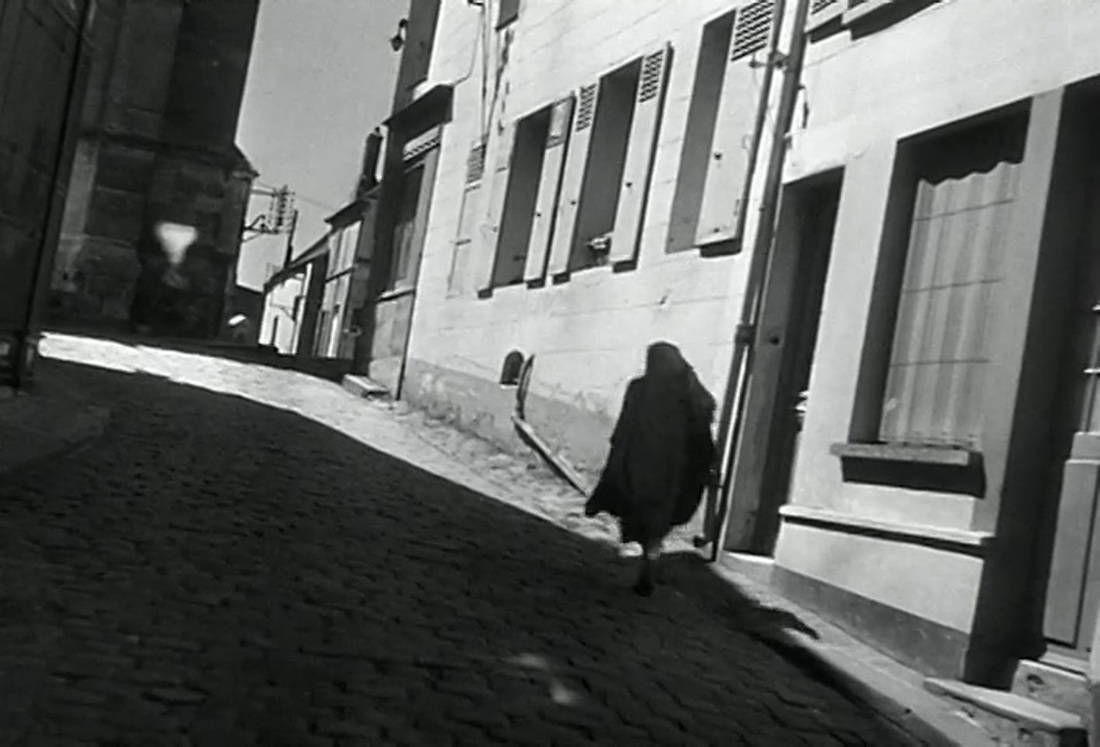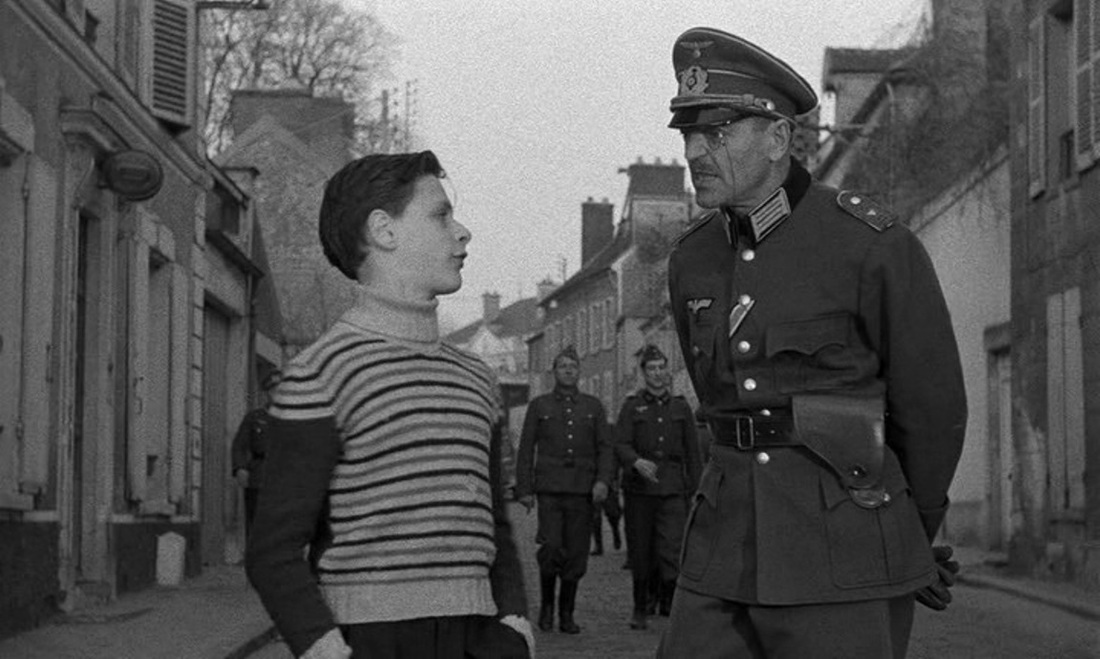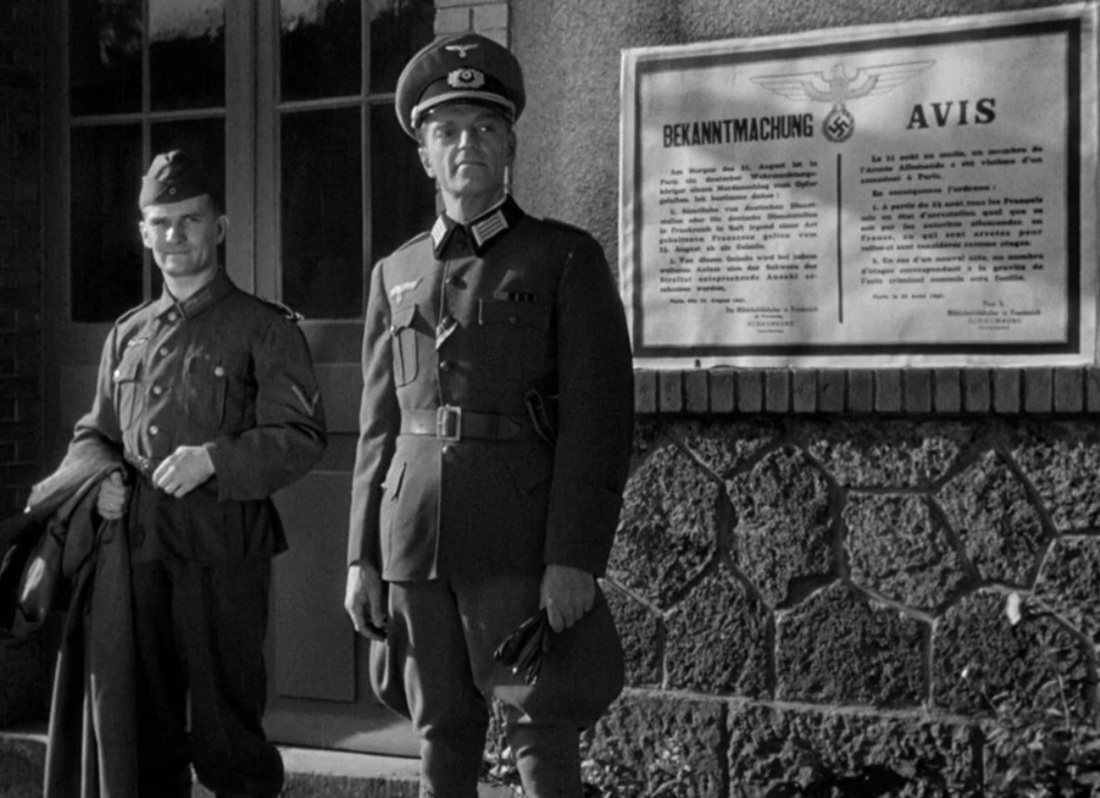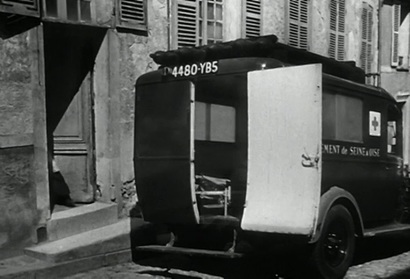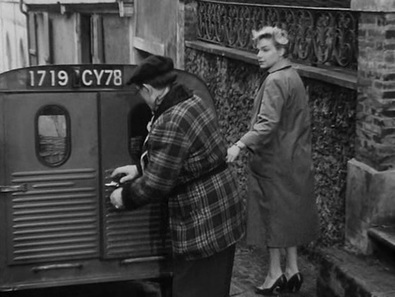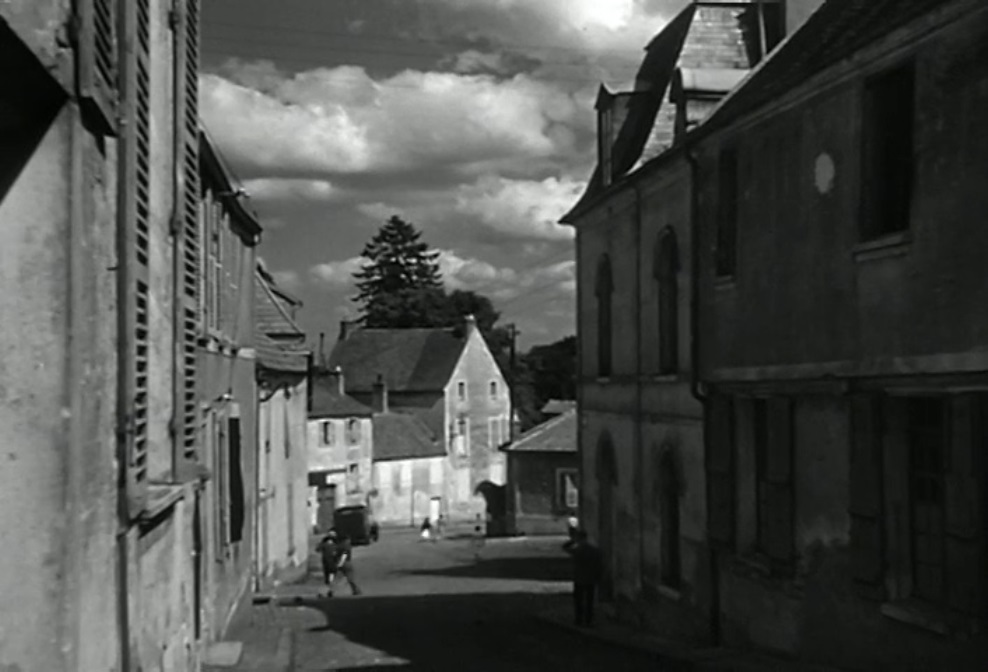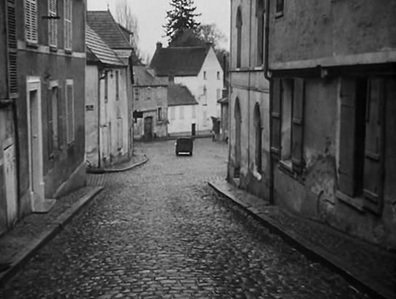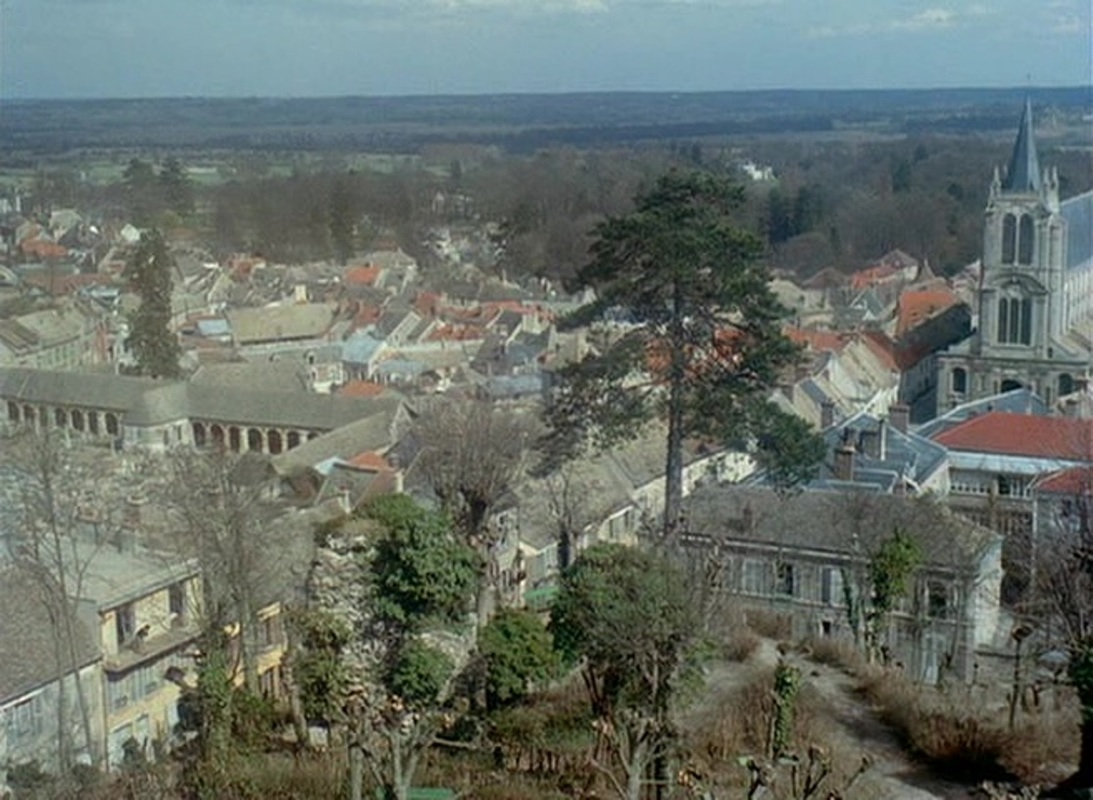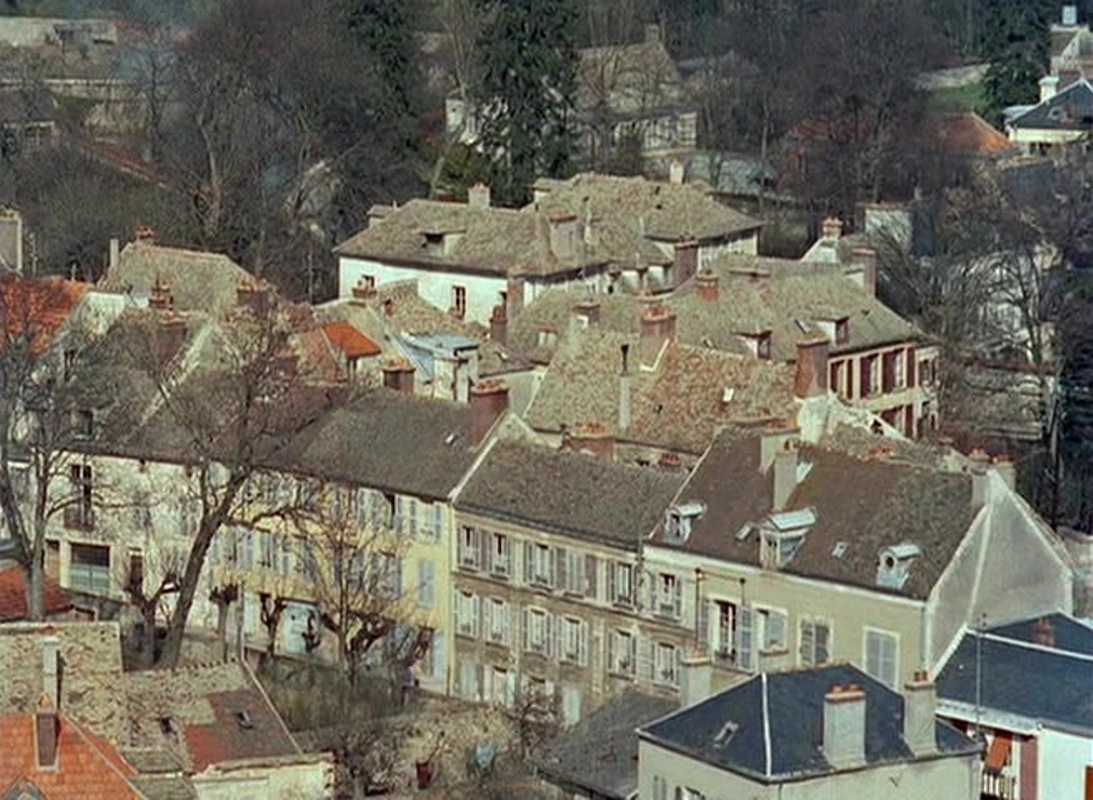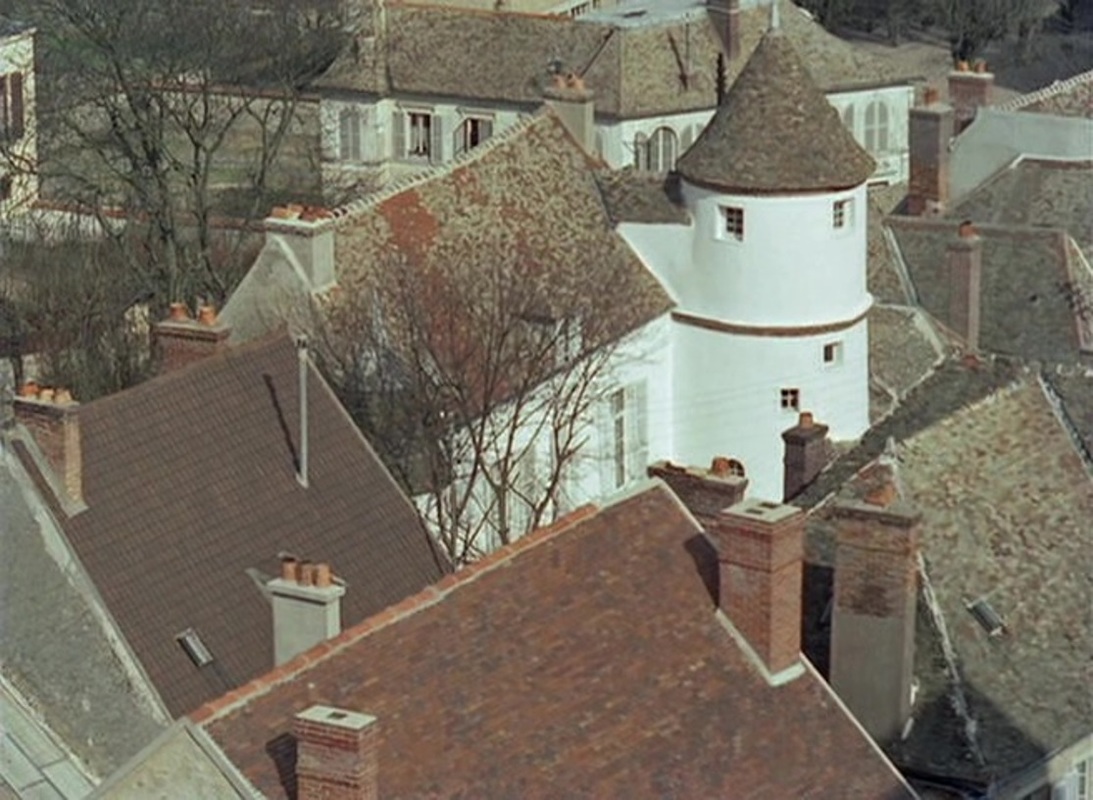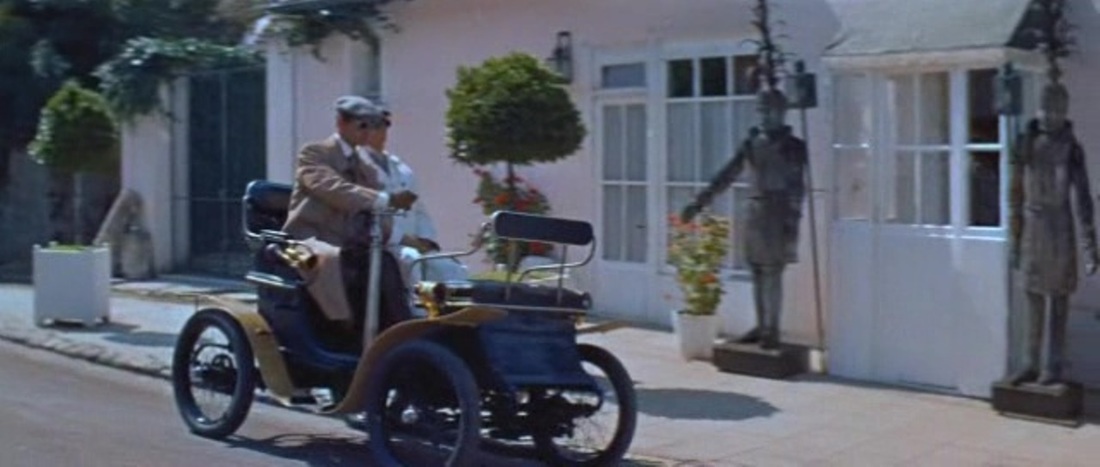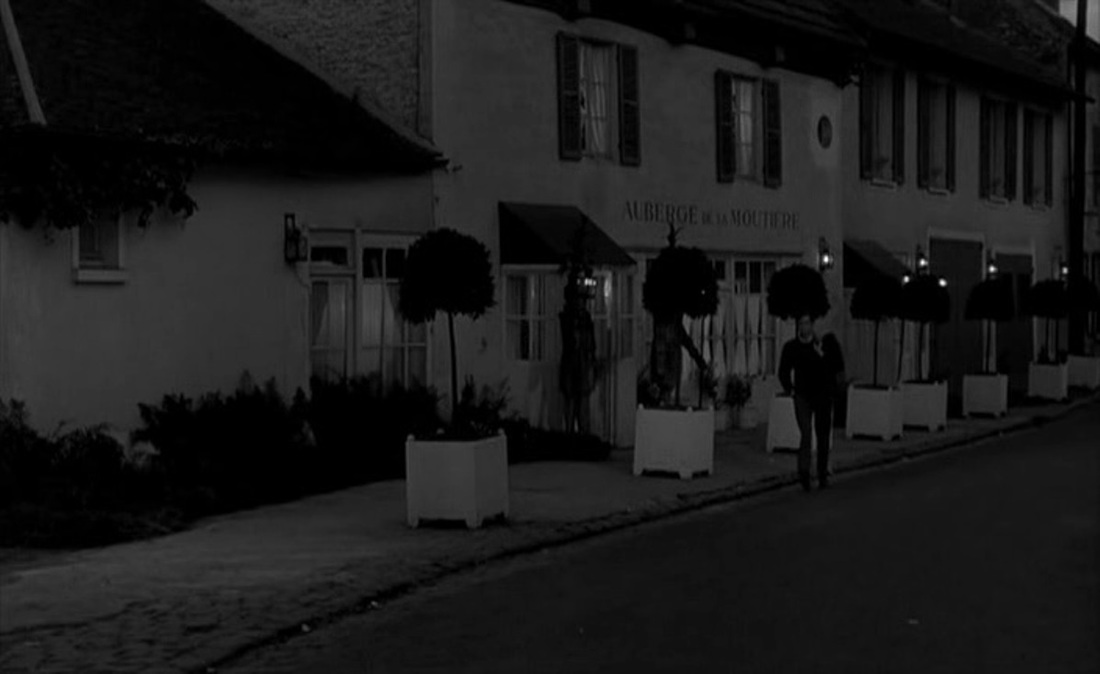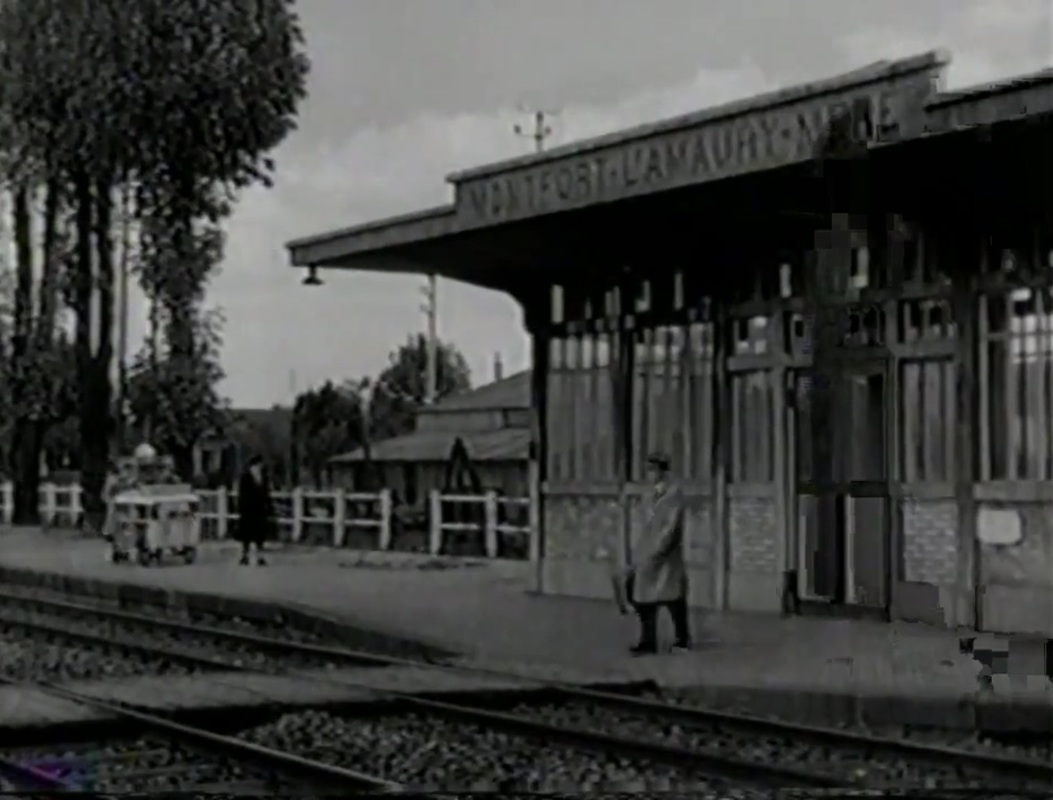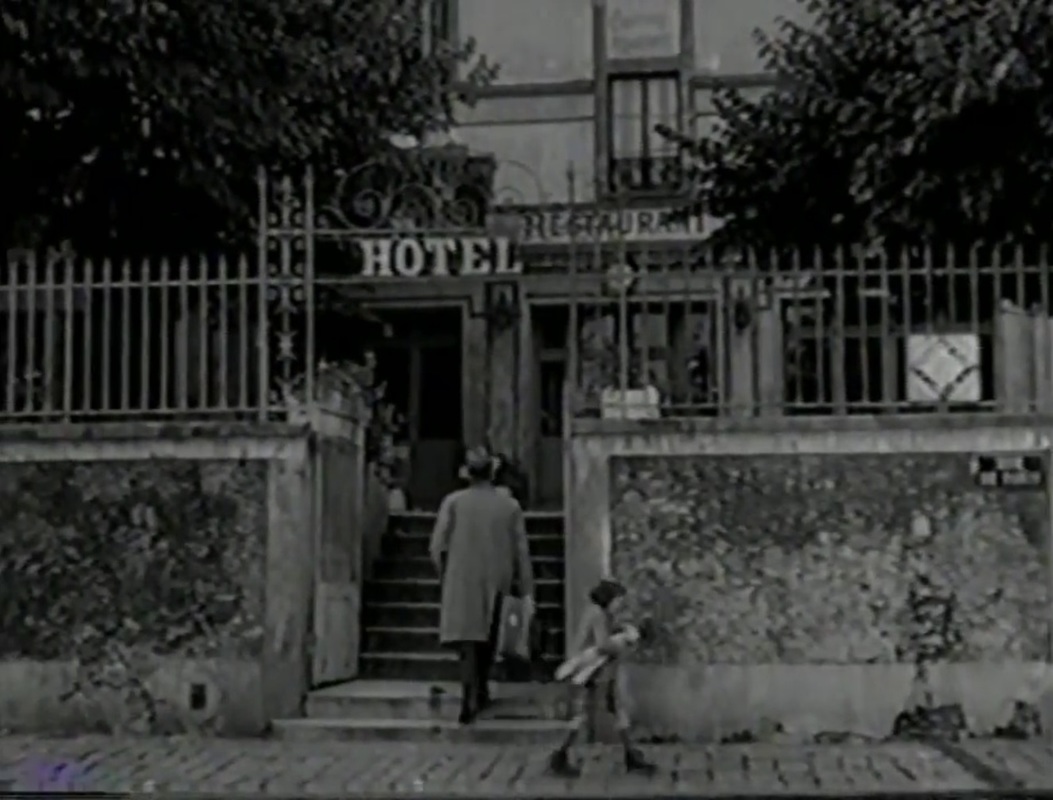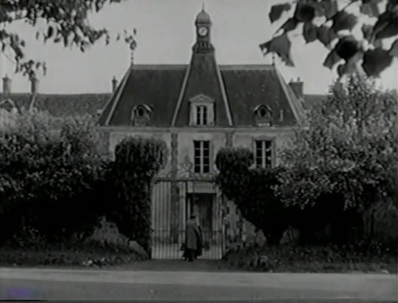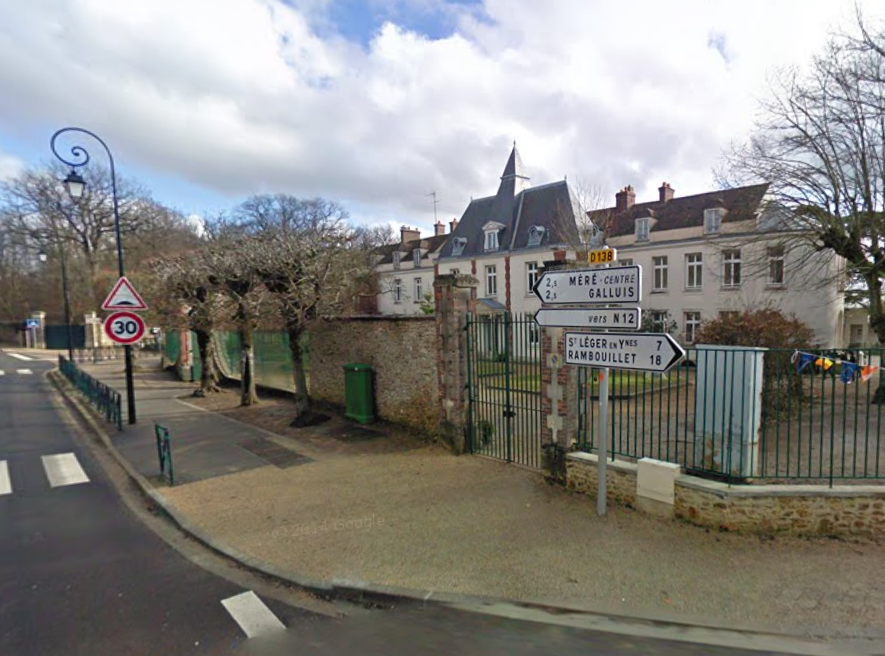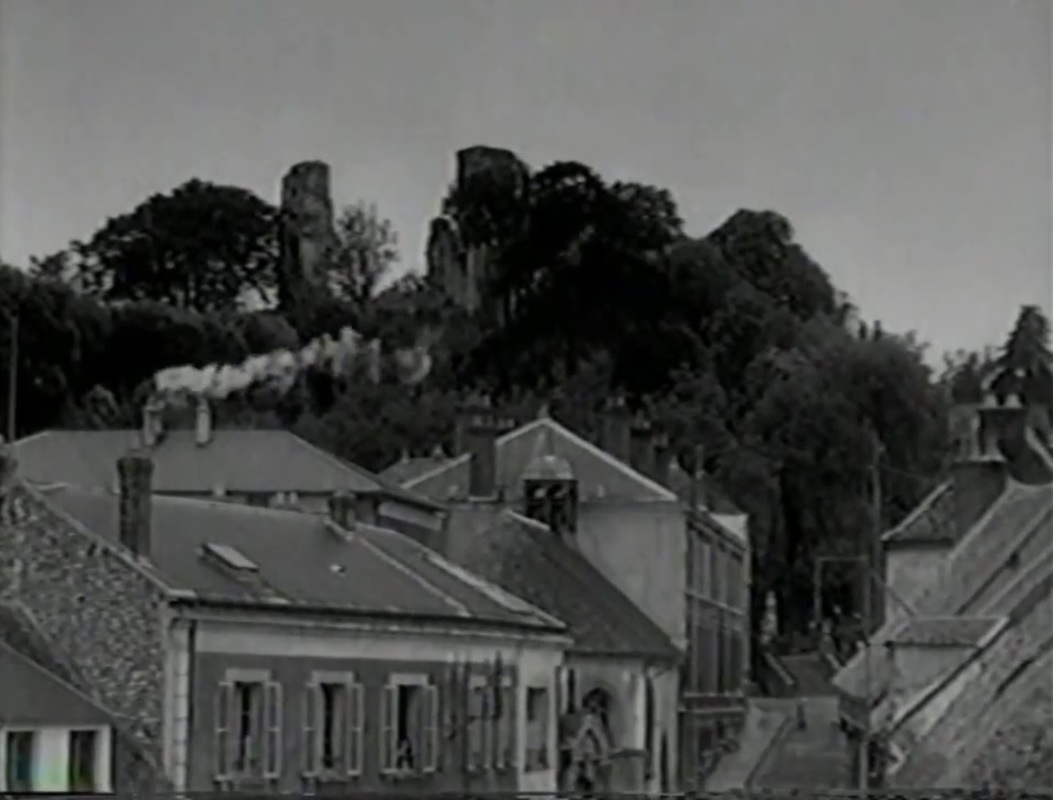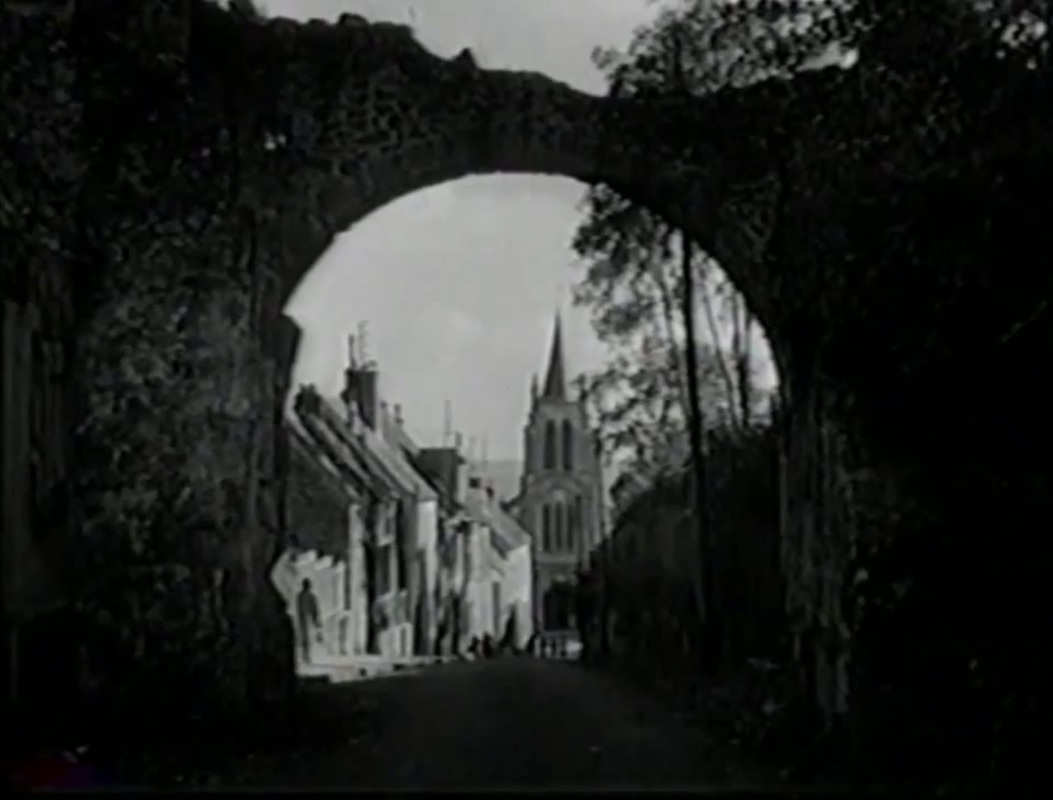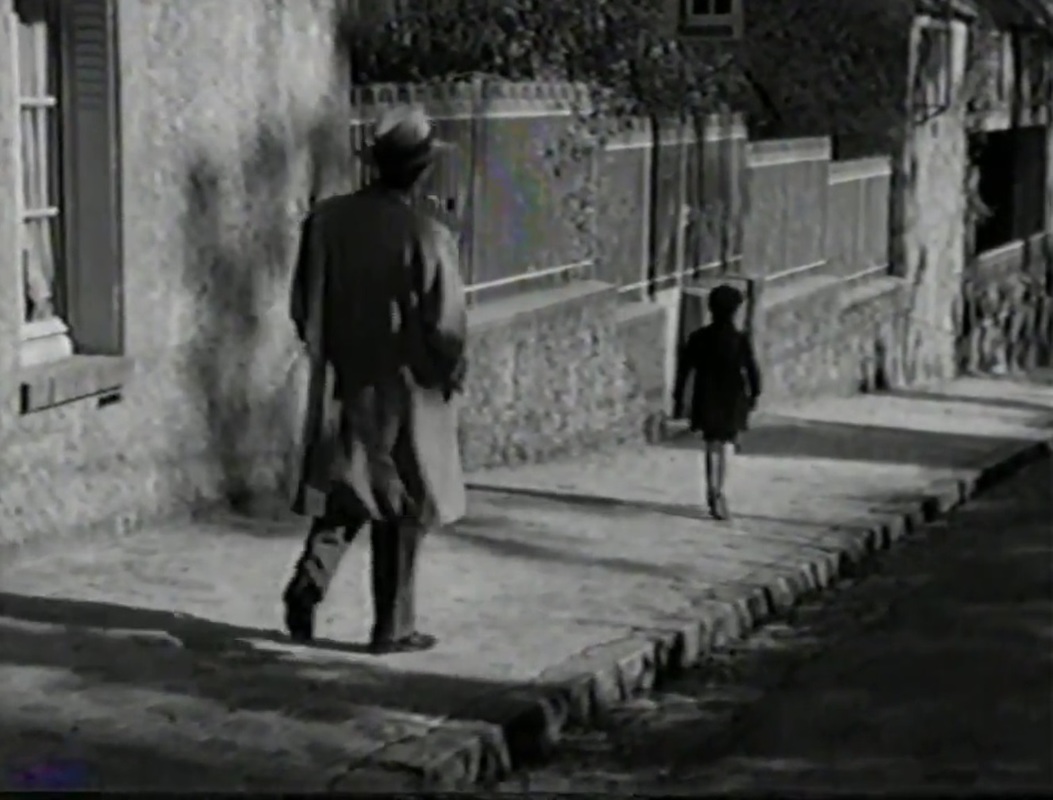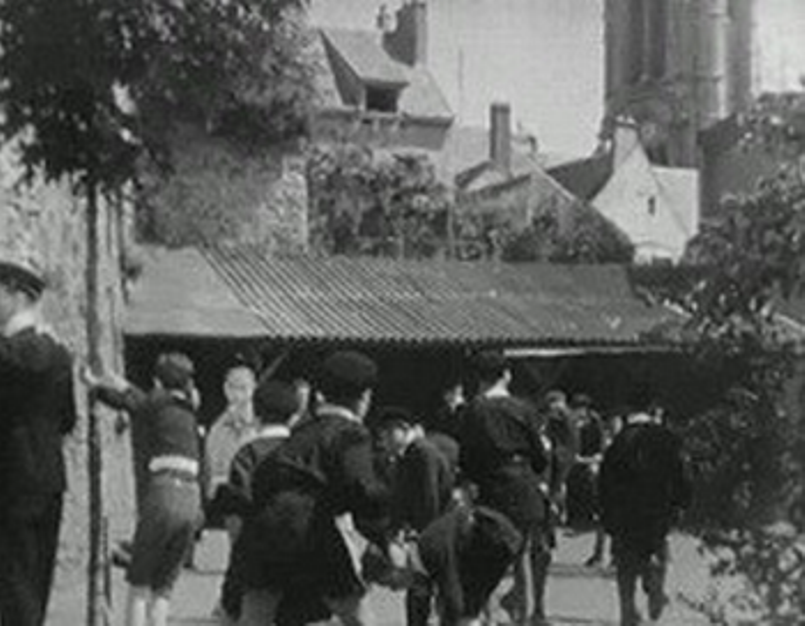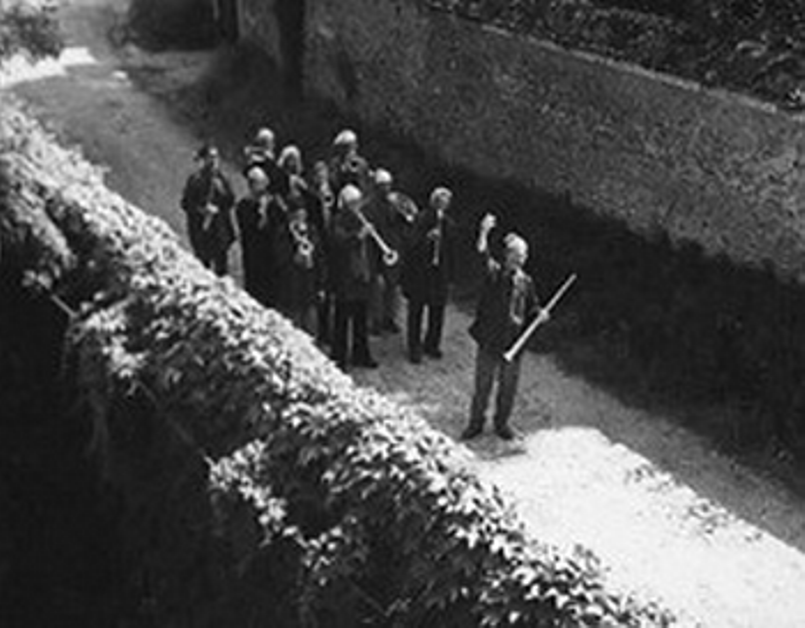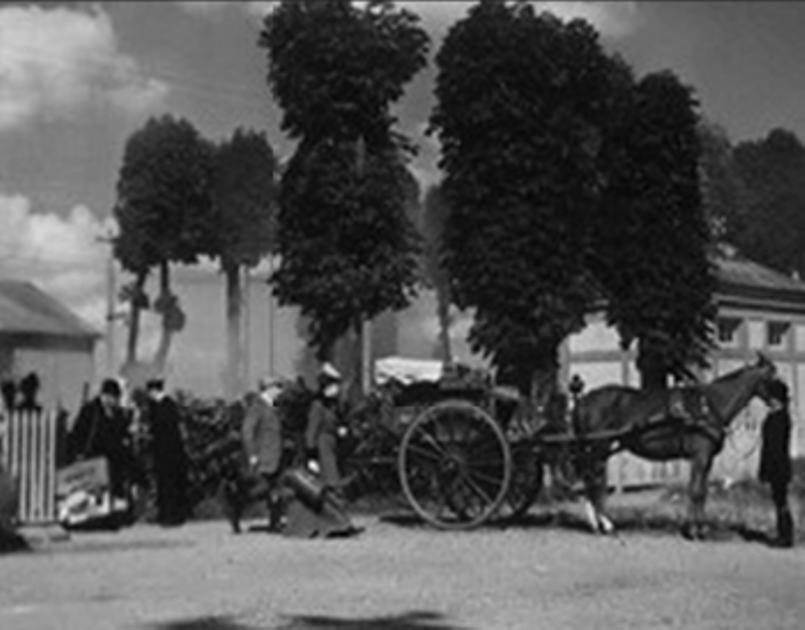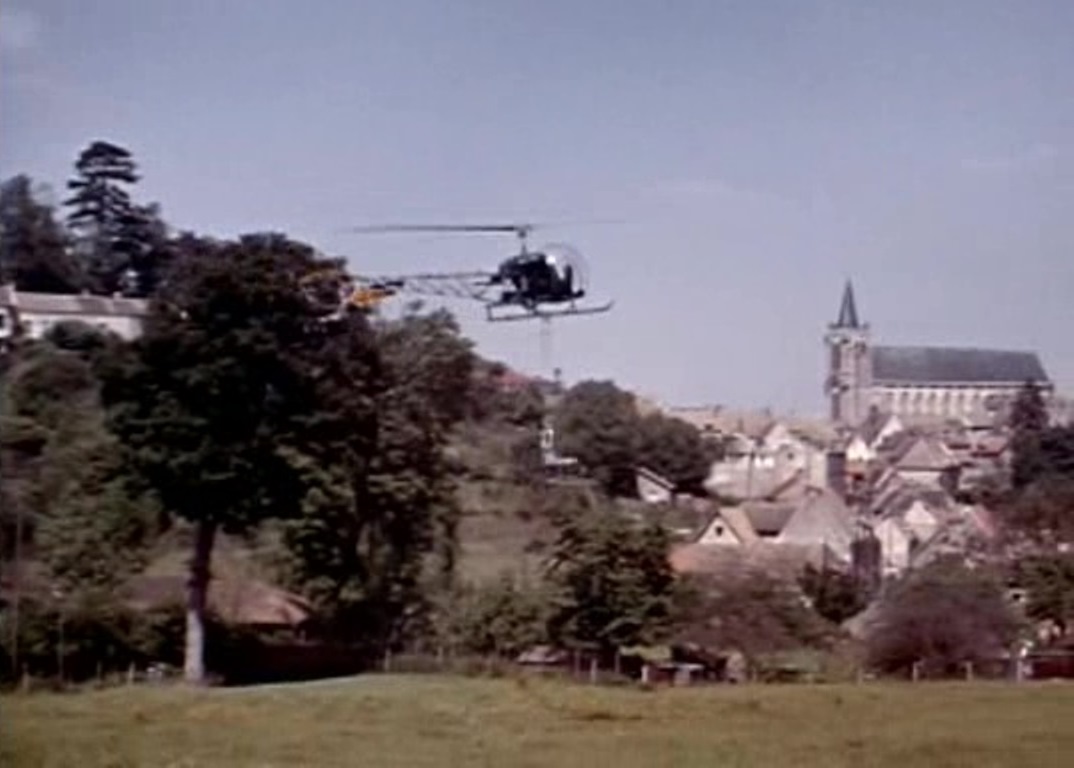1 Church 2 Cemeteries:
Clouzot & Chabrol at Montfort l'Amaury
Clouzot & Chabrol at Montfort l'Amaury
Early in Ophélia (1963), this view of dead crows suspended from a wall suggests a connection between Chabrol's film and Clouzot's Le Corbeau (1943). In the next shot the Hamlet-like protagonist shouts 'What do thse crows want from me?'. The two films share a mood of suspicion and suppressed violence that reinforces the connection, but the points of comparison that interest me here are not avian or atmospheric but topographical:
Ophélia opens with a funeral. The coffin of the hero's father is carried into the church of Saint Pierre at Montfort l'Amaury, a village in the Yvelines department, 56 kilometres west of Paris:
This is the same church from which, twenty years before, the suicide's coffin is brought for burial in Le Corbeau:
The town in Le Corbeau, called 'Saint-Robin', is represented by several different streets in Montfort l'Amaury:
These relatively anonymous streets allow Montfort l'Amaury to stand for the 'small town, here or elsewhere', announced in the credits, but the establishing shot that opens the film shows landmarks of the village that are unmistakeable:
Views of the church and the porte Bardoul recur later in the film:
Though the hospital isn't in the village (the location is not yet identified), 'Saint Robin' is, effectively, Montfort l'Amaury, and recognisable as such. On the other hand 'Ernelès', the town in Ophélia, is a composite, with elements of Montfort l'Amaury, Villepreux, Les Clayes-sous-Bois, Mareil-le-Guyon and other places as yet unidentified:
The funeral services in Le Corbeau and Ophélia take place in the same church, but the cemeteries shown in each film are very different. In Le Corbeau the coffin is carried to the inner-village cemetery of Montfort l'Amaury, with its distinctive sixteenth- and seventeenth-century cloisters. The opening sequence of the film shows the cemetery as a whole and then in detail; we see it again at the burial half way through:
The cemetery we see in Ophélia is of a completely different type, a walled square of plots on the outskirts of a village, Mareil-le-Guyon:
Cemeteries of this type recur in several films already discussed on this website, in Franju, for instance (see here):
In the Corbeau-Ophélia intertext, it is the church, then, that is the operative topotrope - the ground in Clouzot's film occupied by Chabrol's. This common ground is shared by a third film, made a year before Ophélia:
This is the church of Saint Pierre at Montfort l'Amaury in Jean-Pierre Melville's Leon Morin, prêtre (1961). Melville's use, in a film set in 1943, of a location from a film made in 1943, is a Bakhtinian chronotope, a sense of time expressed through space. The film is set and largely shot in the Grenoble area, but this topographically incongruous location is used to position Melville's film about the Occupation vis-à-vis a famous film made during the Occupation. In an early sequence Melville shows his protagonist as a figure in black moving slowly up the rue de Paris, recalling the nurse who runs up this and other streets of Montfort l'Amaury in a memorable sequence of Le Corbeau:
These are different ends of a very long street. In another part of the rue de Paris Melville stages another intertextual encounter. A German officer questions a French boy in the street and is told 'foutez-moi la paix':
That is more or less the attitude of the French in Melville's earlier Occupation film, Le Silence de la mer (1949), which featured this same German officer - same actor (Howard Vernon), same uniform:
For at least two films, then, the use of Montfort l'Amaury as a location points intertextually to Clouzot's Le Corbeau. Another film that is obviously aware of the precedent is Clouzot's own Les Diaboliques (1955). The house where the murder is committed is on the rue de Dion, exactly opposite a house used in Le Corbeau:
Both shots are followed by closing matching views of the rue de Dion:
Clouzot moved to Montfort l'Amaury in the early 1950s, so his use of its streets in Les Diaboliques may be a matter of convenience more than anything, though Susan Hayward argues that it is a deliberate riposte to those who censored Le Corbeau. Several other films of the 1950s and early '60s feature this same village without necessarily knowing of its role in Le Corbeau. Renoir would have known, but it is I think impossible to make intertextual connections between Le Corbeau and his Elena et les hommes (1956), which uses overhead views of Montfort l'Amaury to represent 'Bourbon-Salins':
In 1958 Minnelli's Gigi visited l'Auberge de la Moutière in Montfort l'Amaury:
Three years later Litvak's Goodbye Again was at the same restaurant:
George Seaton's Little Boy Lost (1953) is a Hollywood production that stays somewhat longer in Montfort l'Amaury. Bing Crosby comes to see a boy in an orphanage who may well be his son, lost in the war after his mother's death. This film makes as full use of the village as Le Corbeau, and doesn't attempt to disguise it as another place. Crosby arrives by train and makes his way to the Hôtel de la Terrasse:
The orphanage is the château de Bel-Air, on the route de Saint Léger:
More familiar landmarks and streets are shown:
It is possible that the idea to shoot at Montfort l'Amaury came from Paul Mesnier's Poil de carotte, a similarly child-centred film made there the year before, or it may just be a coincidence:
(These images are from the Google Map created by Microb, here. Microb has also created a map for Clouzot's film at Montfort l'Amaury, here.)
Though Little Boy Lost references the period of Occupation, the topographical connection to Le Corbeau is surely a coincidence. So too is, I assume, the brief passage over Montfort l'Amaury of Crosby's regular partner Bob Hope, here hanging from a helicopter piloted by Fernandel in Paris Holiday (1958):

